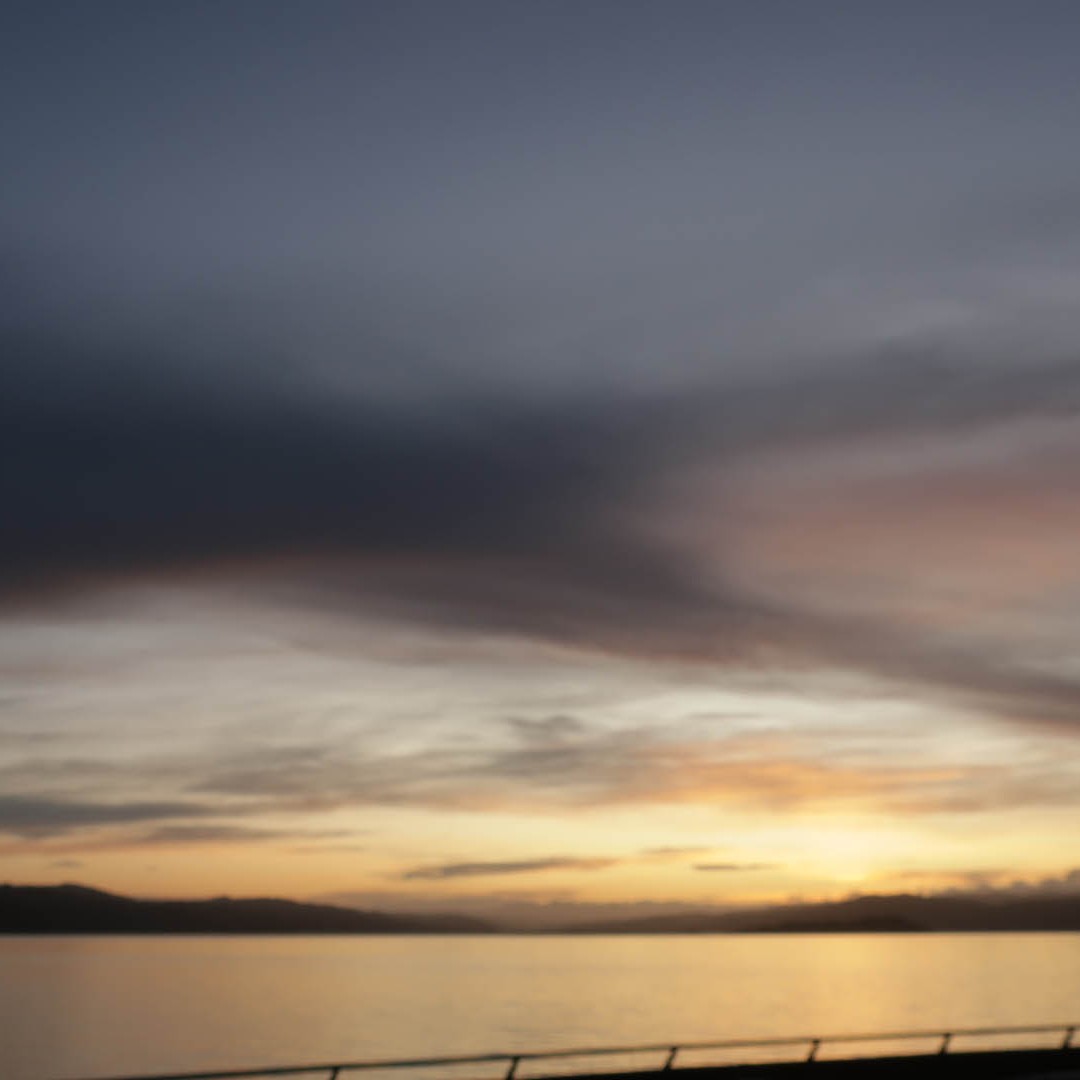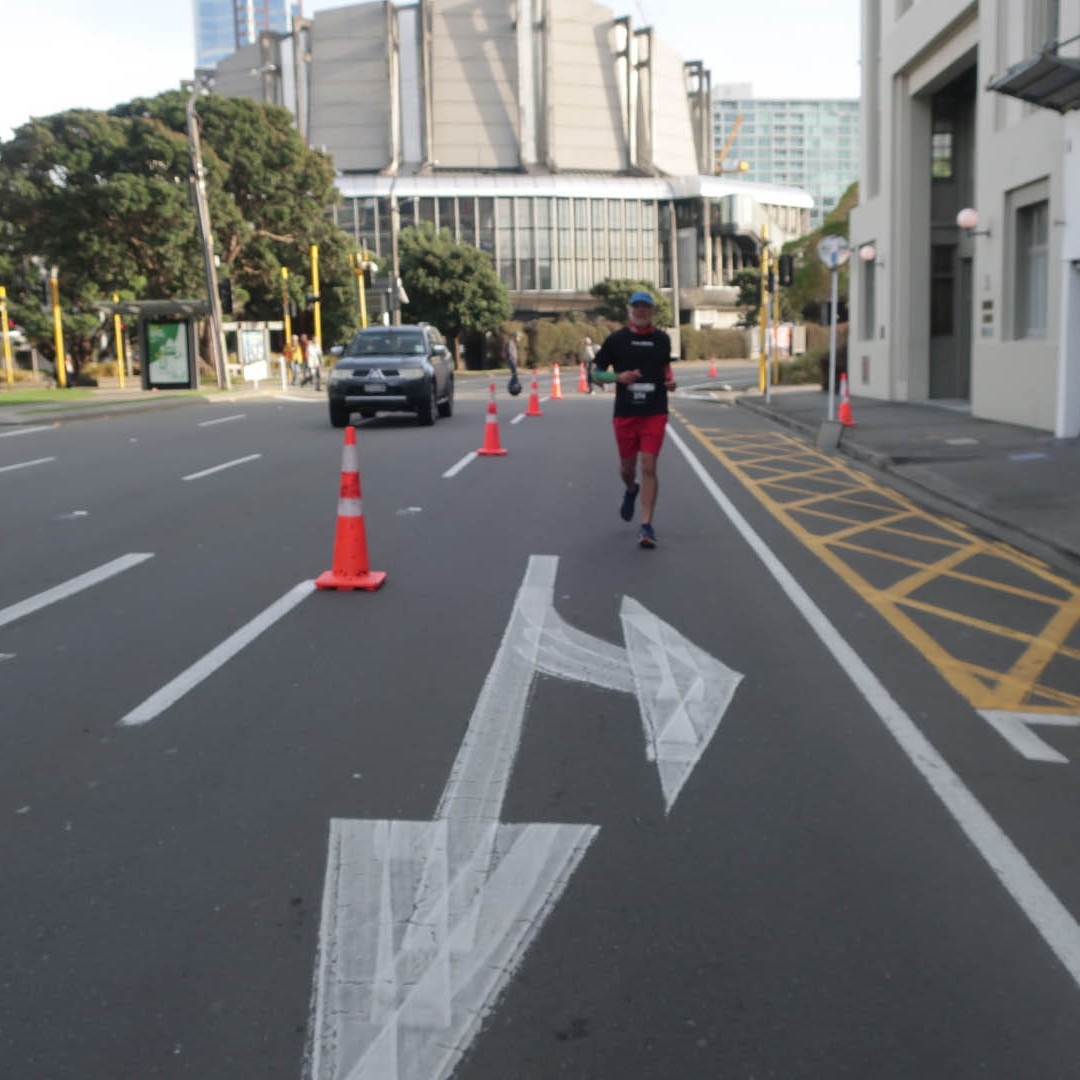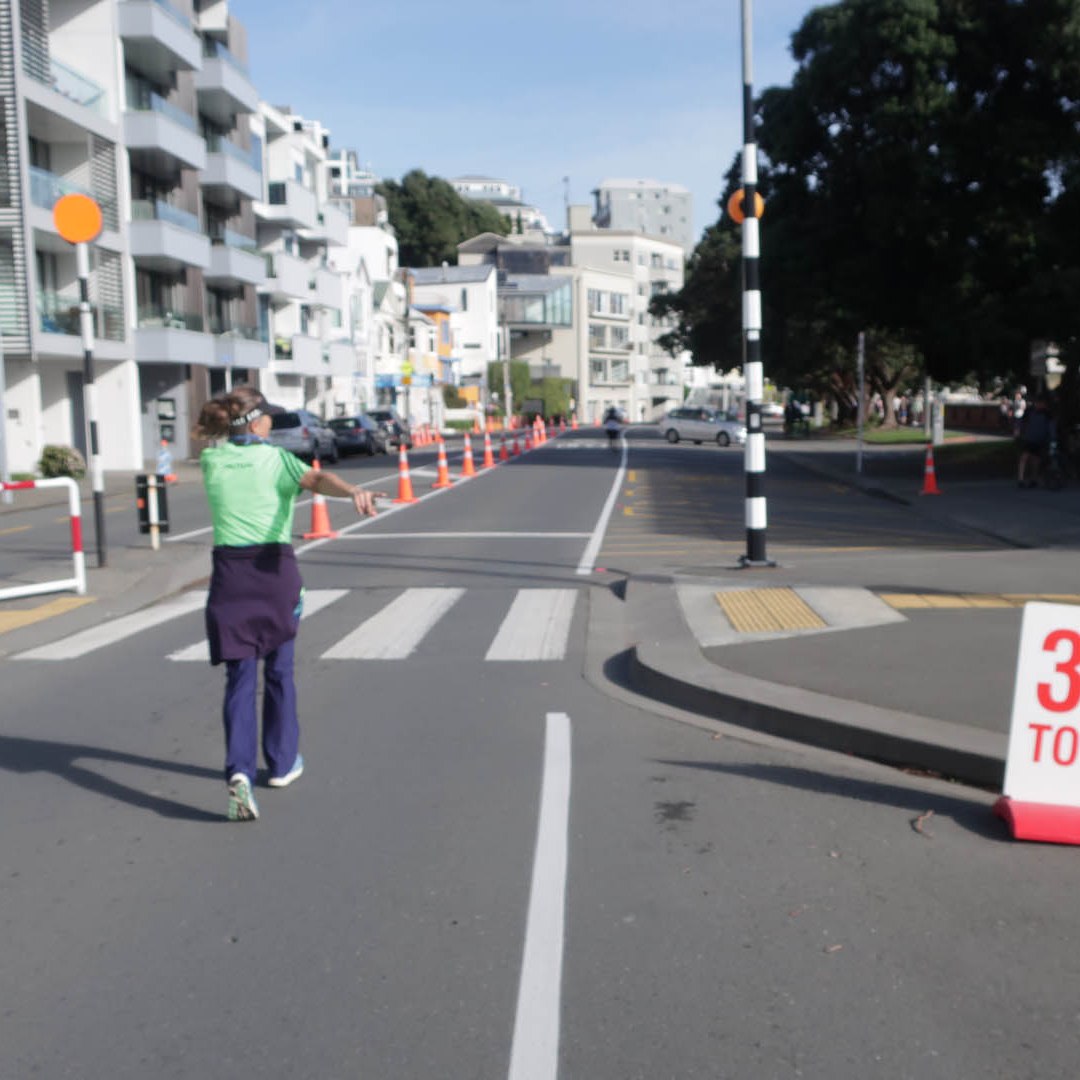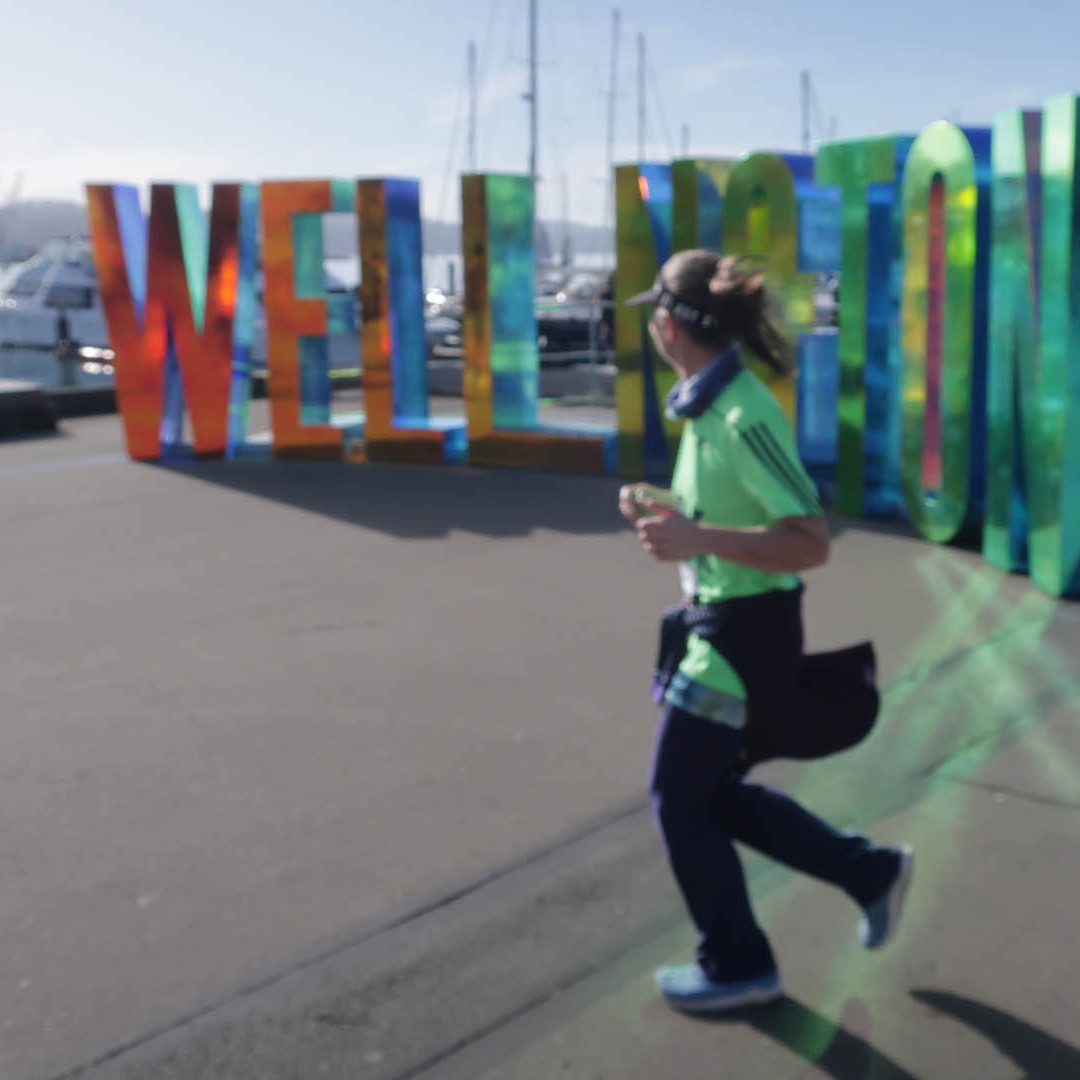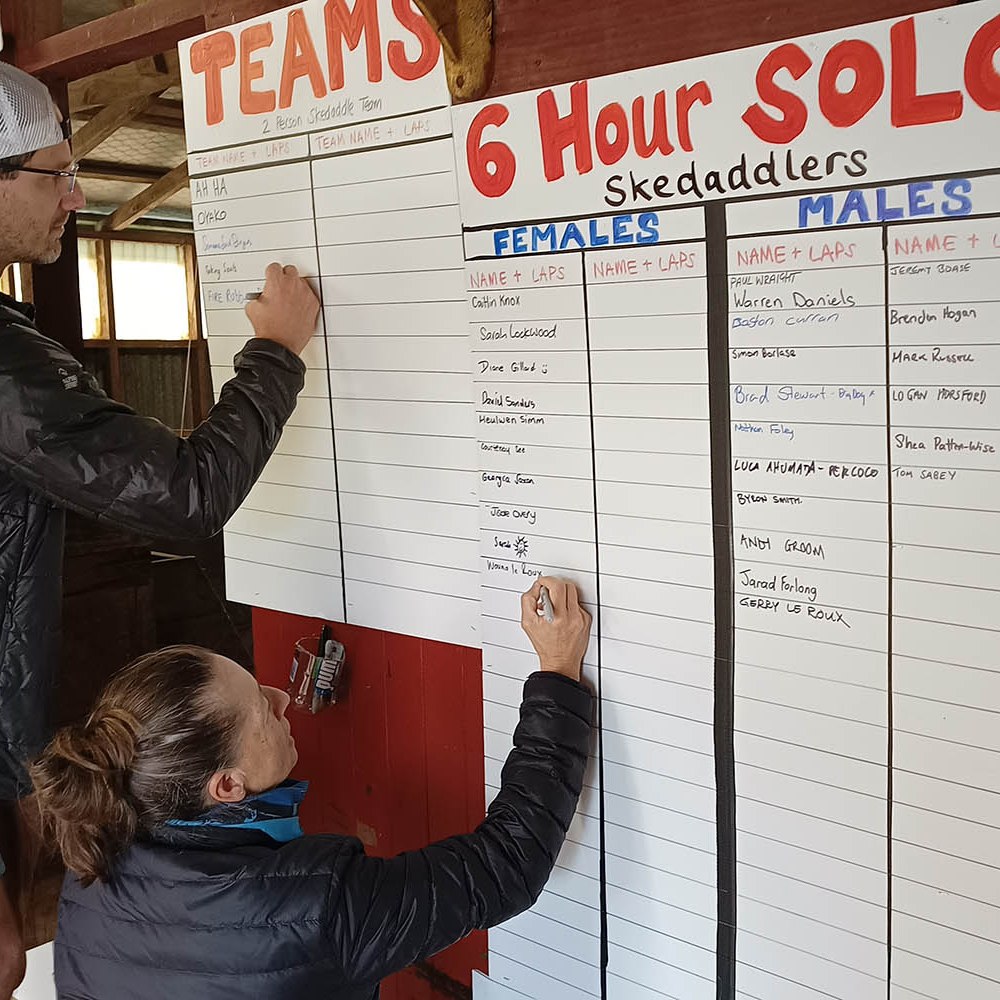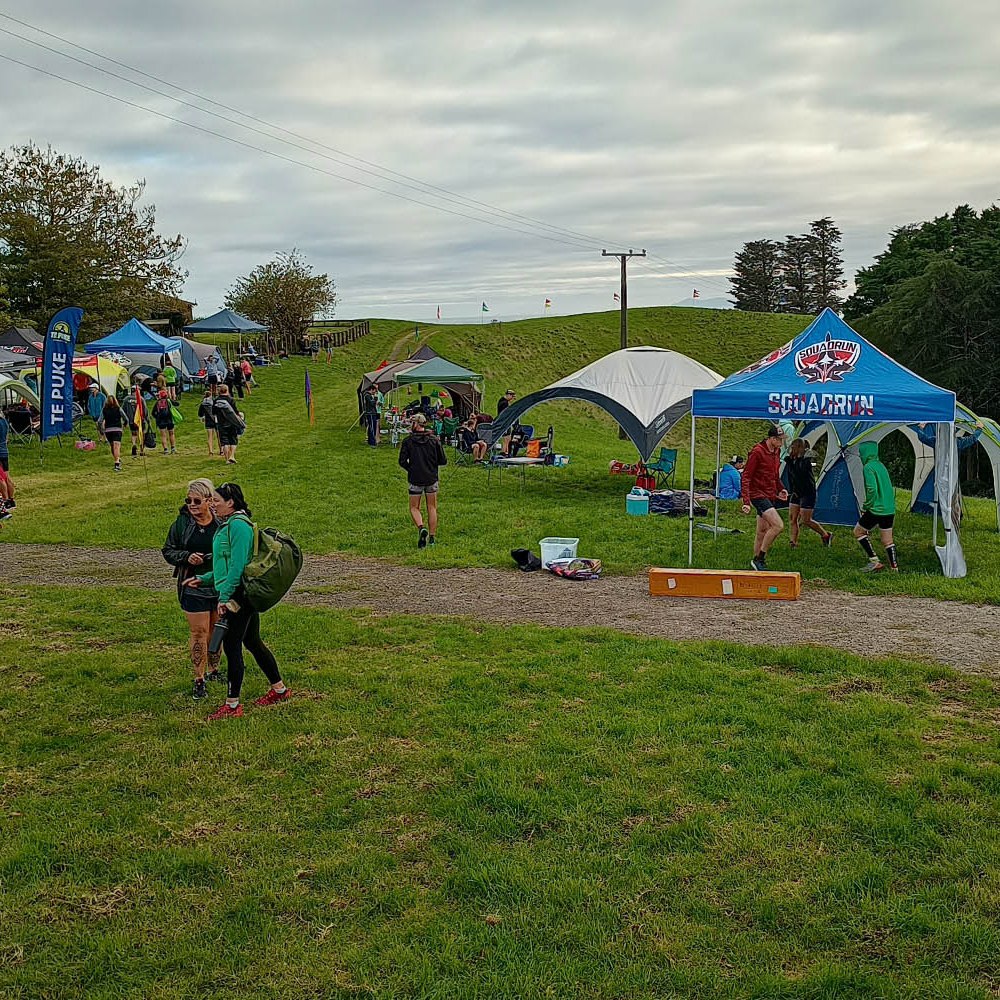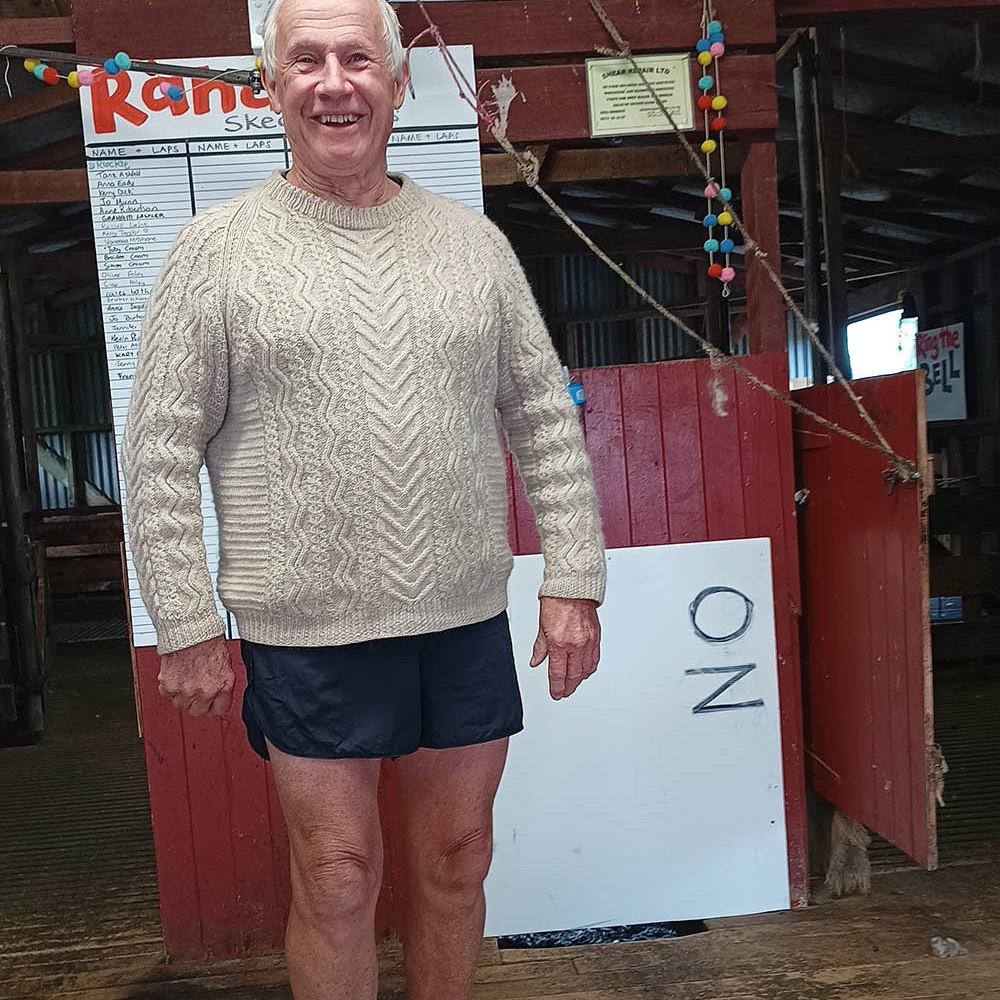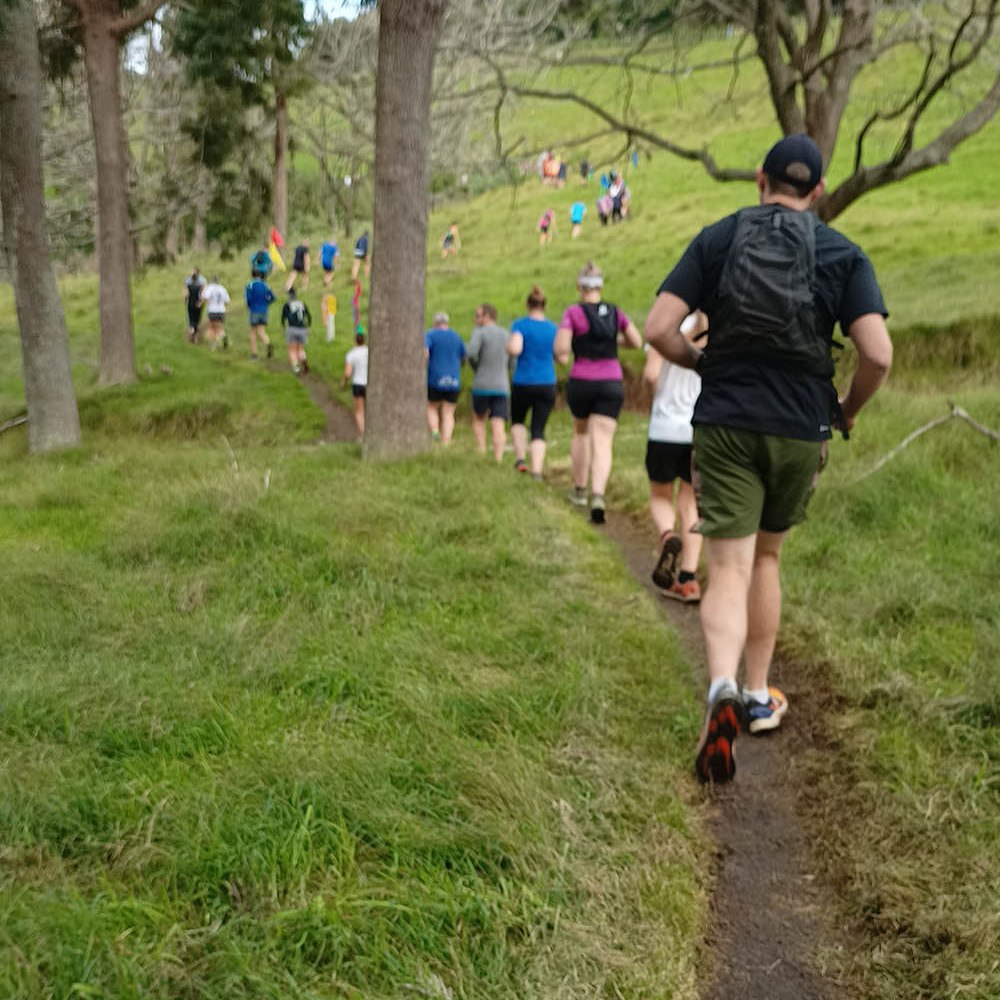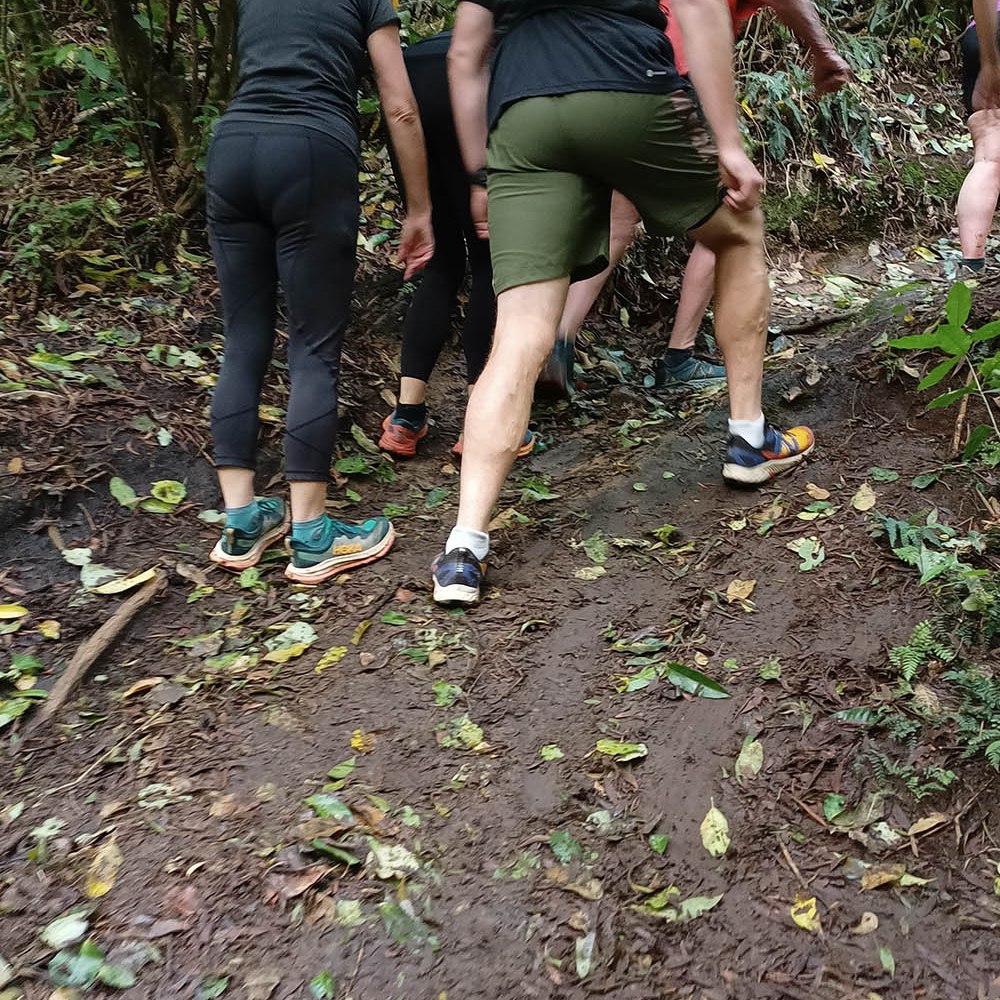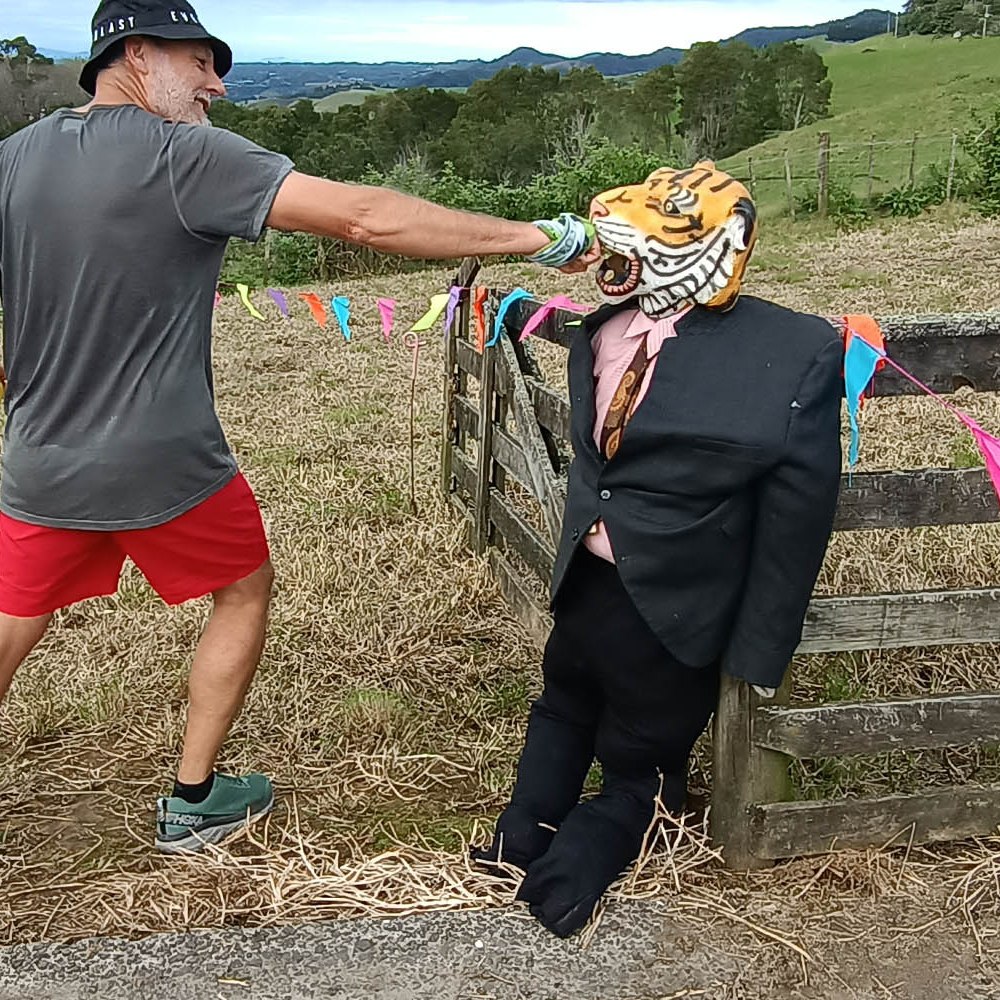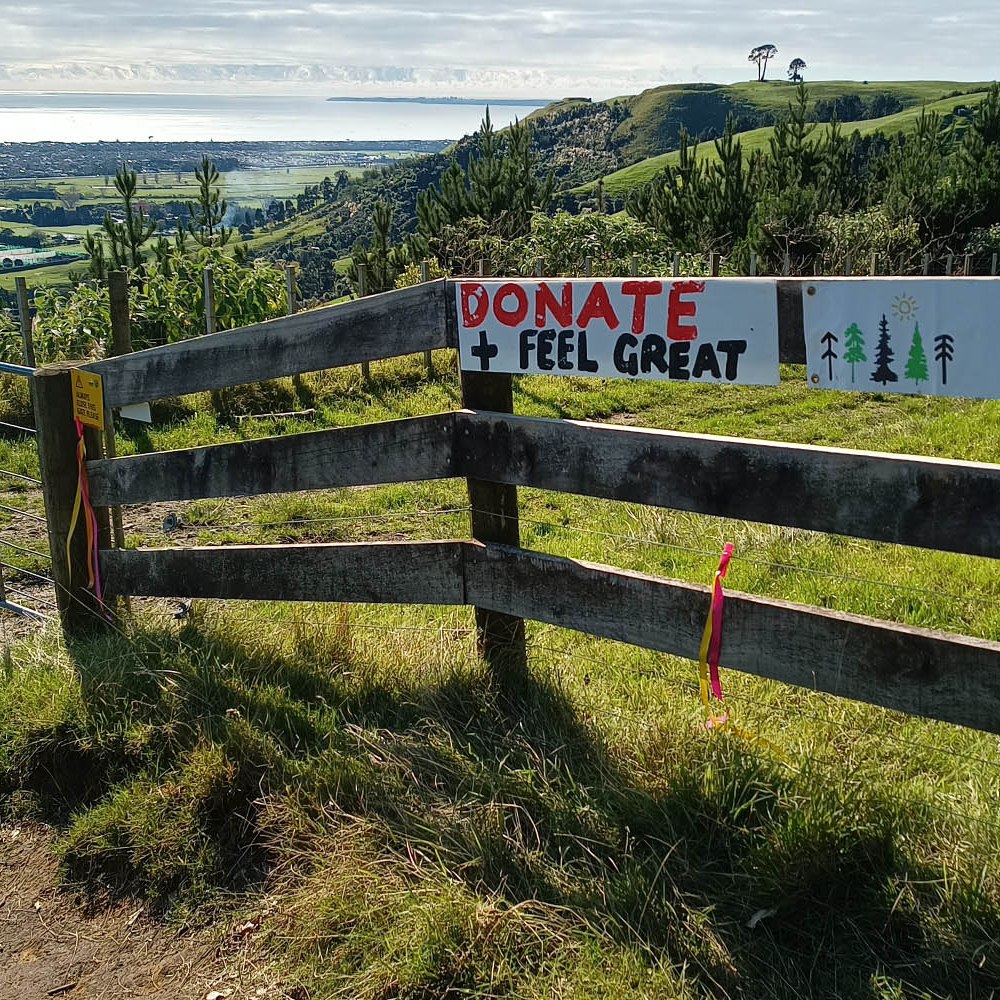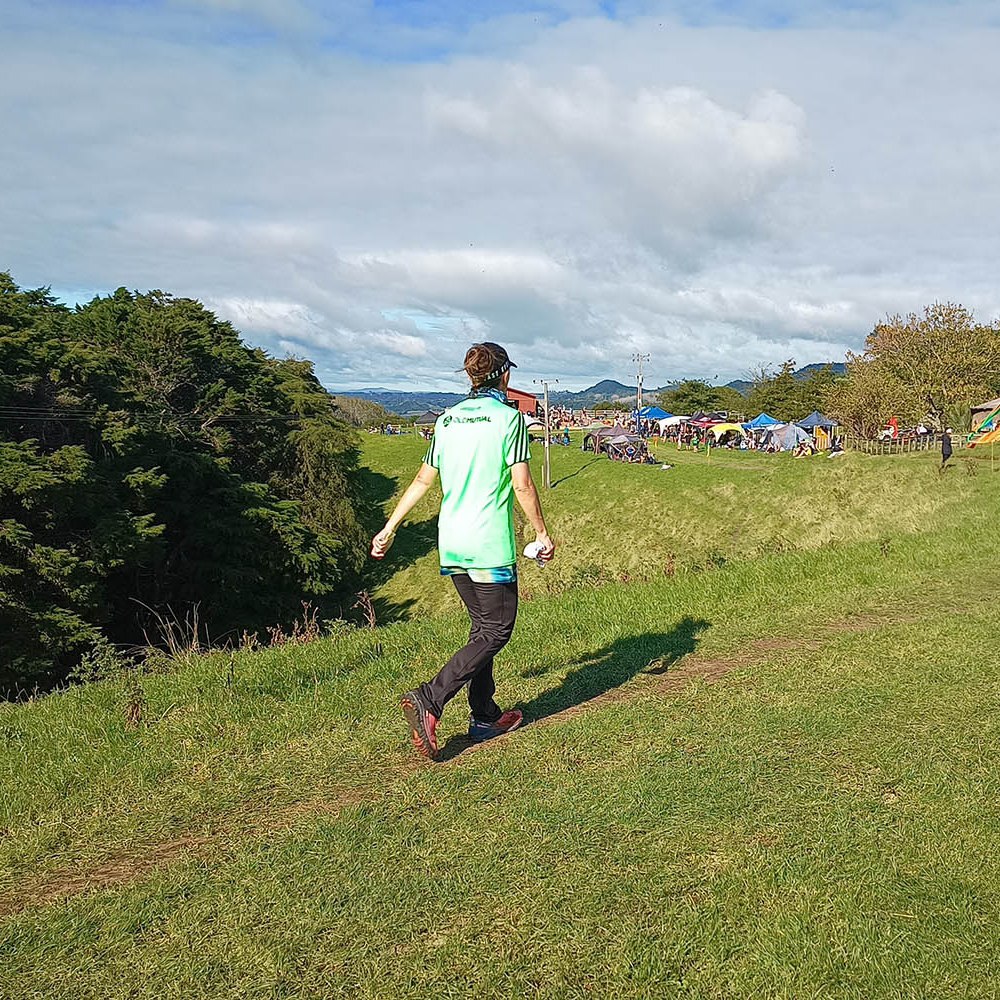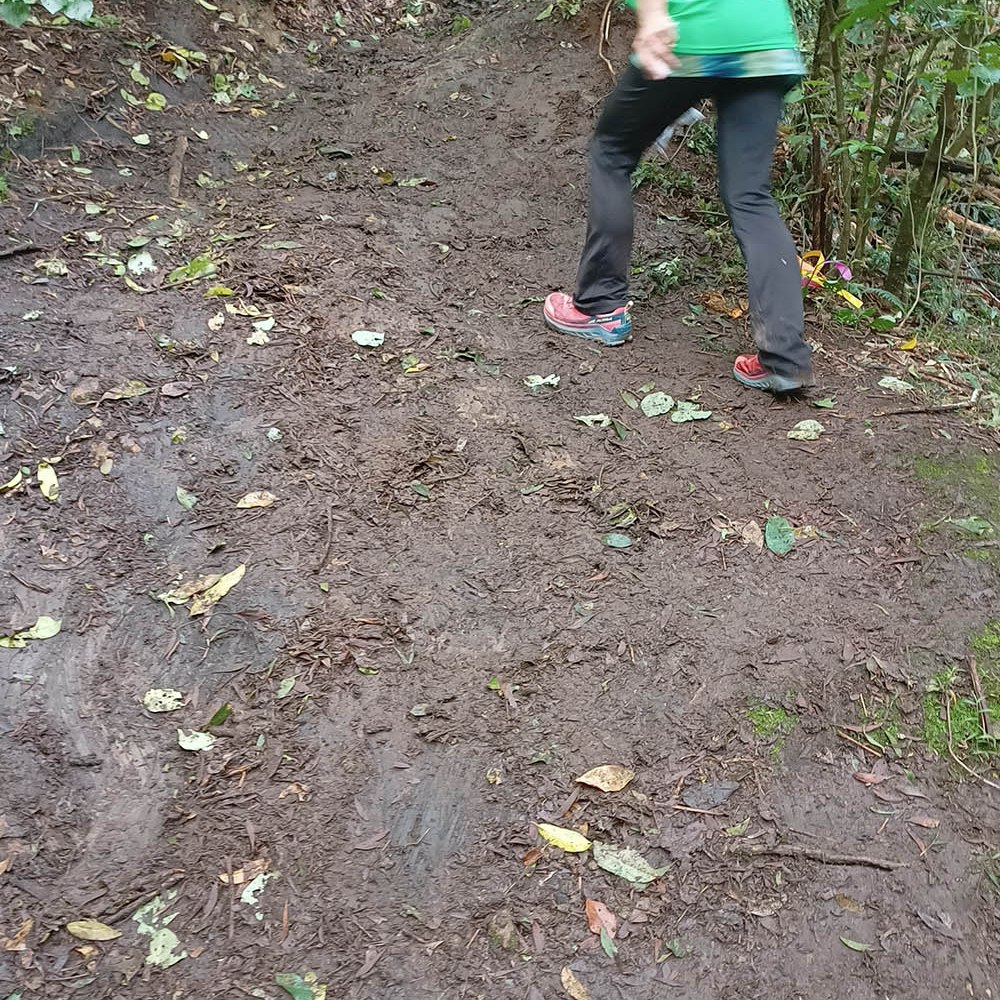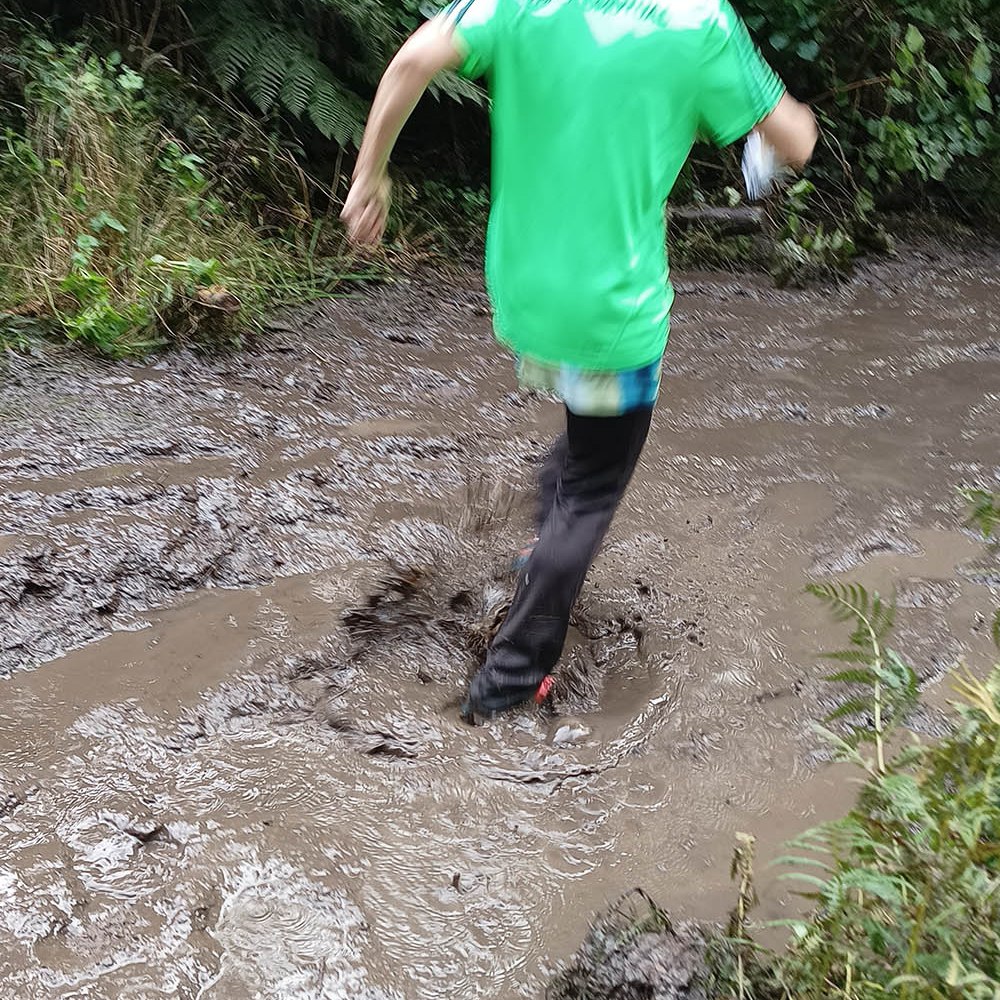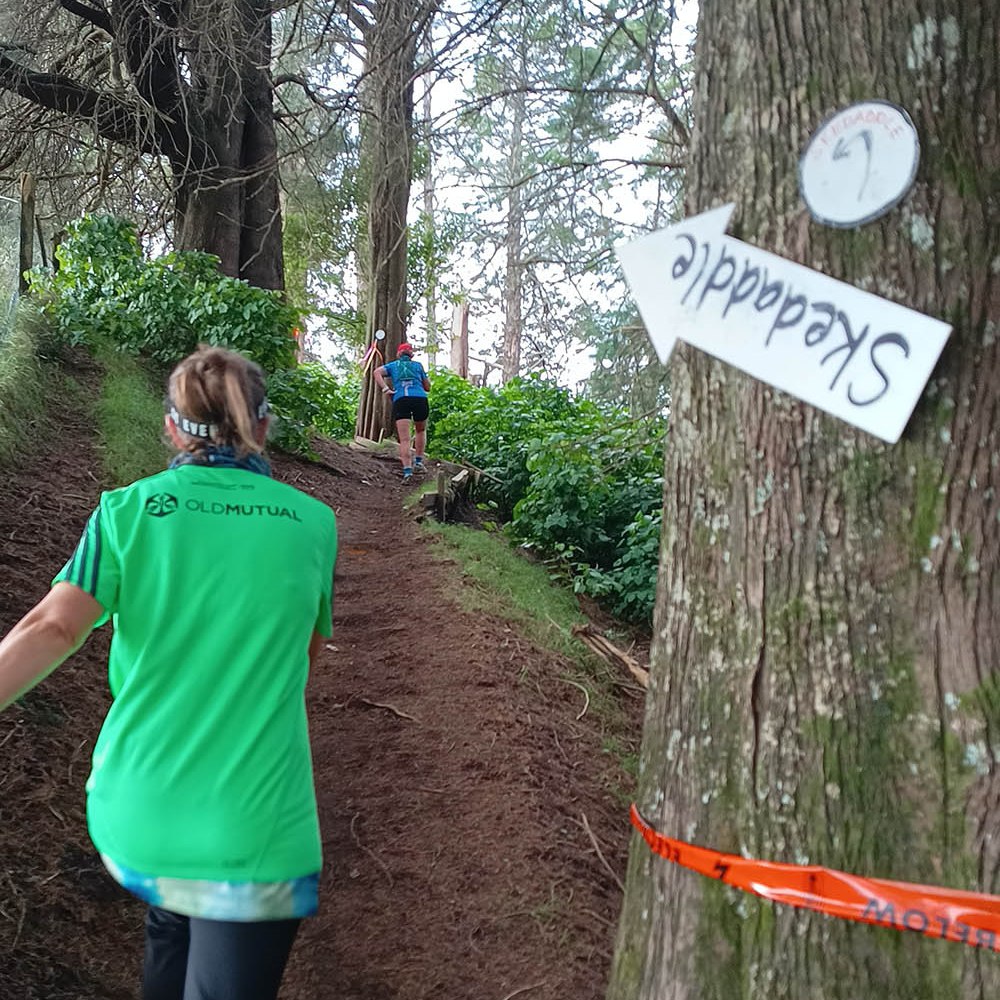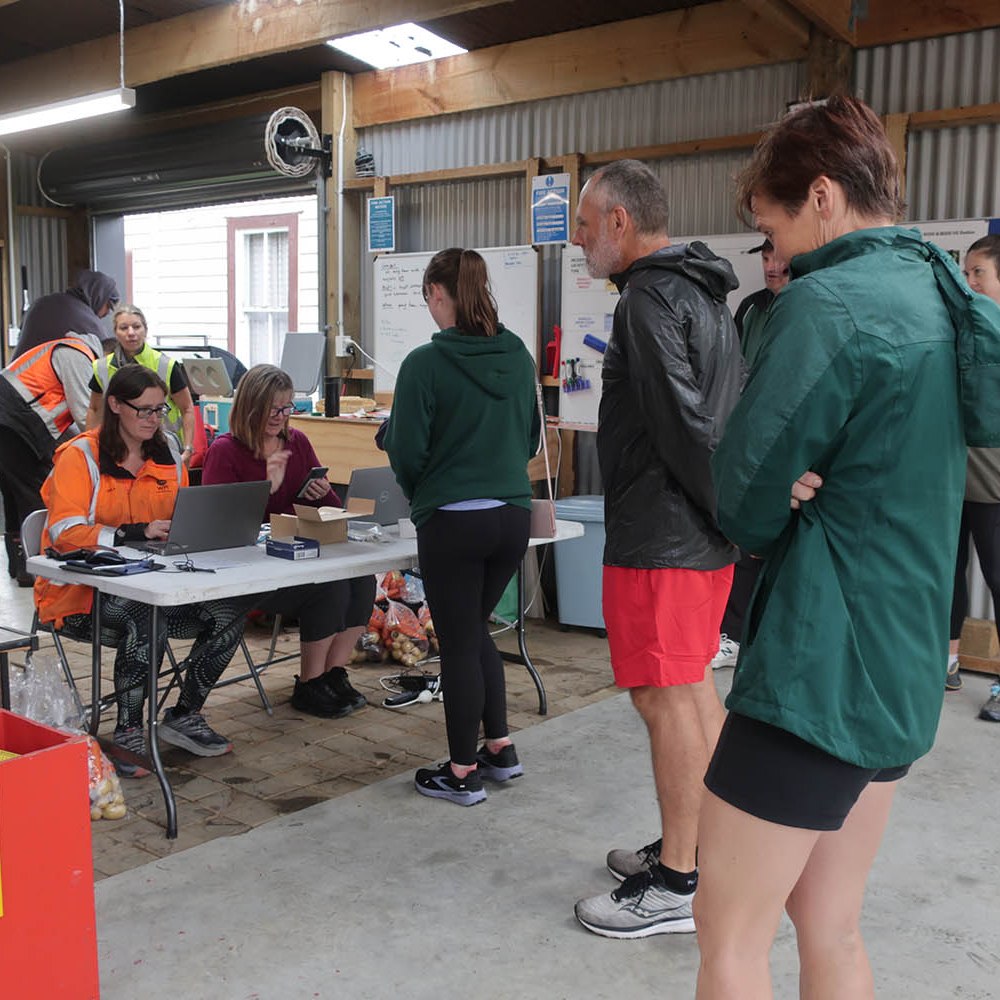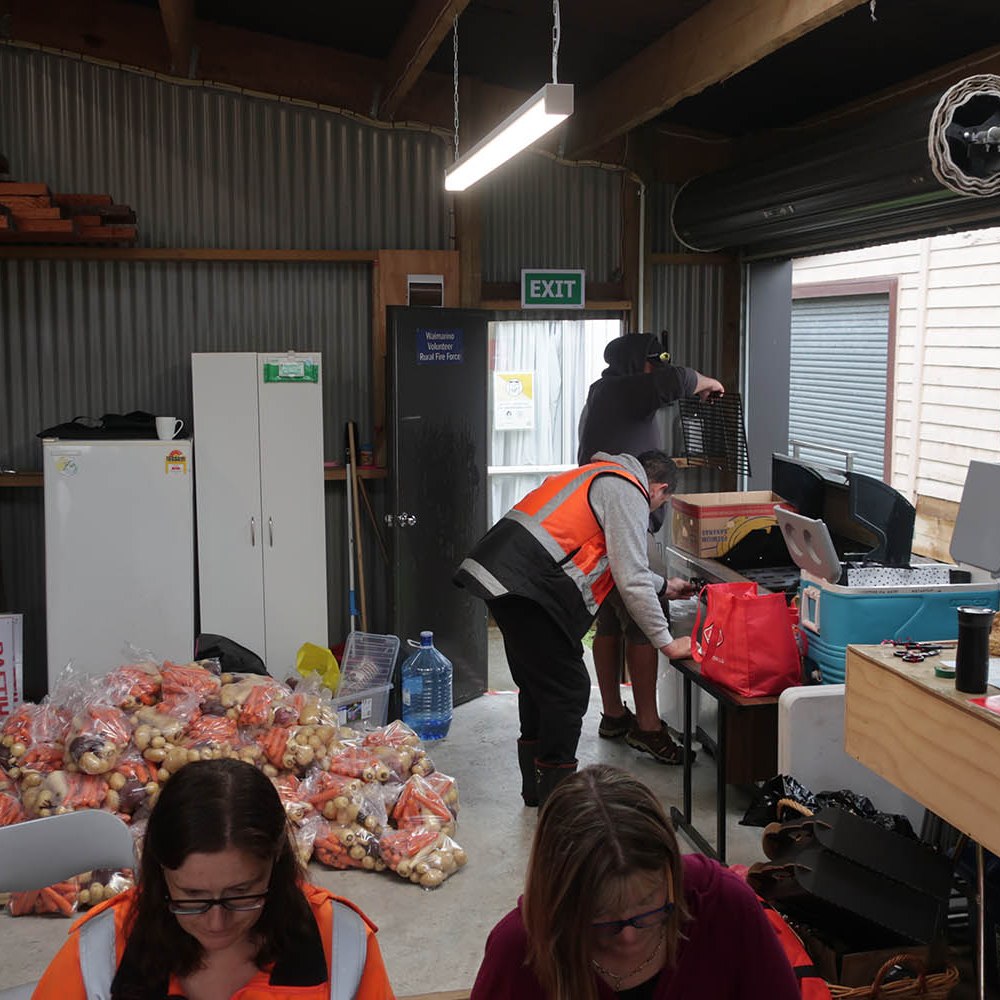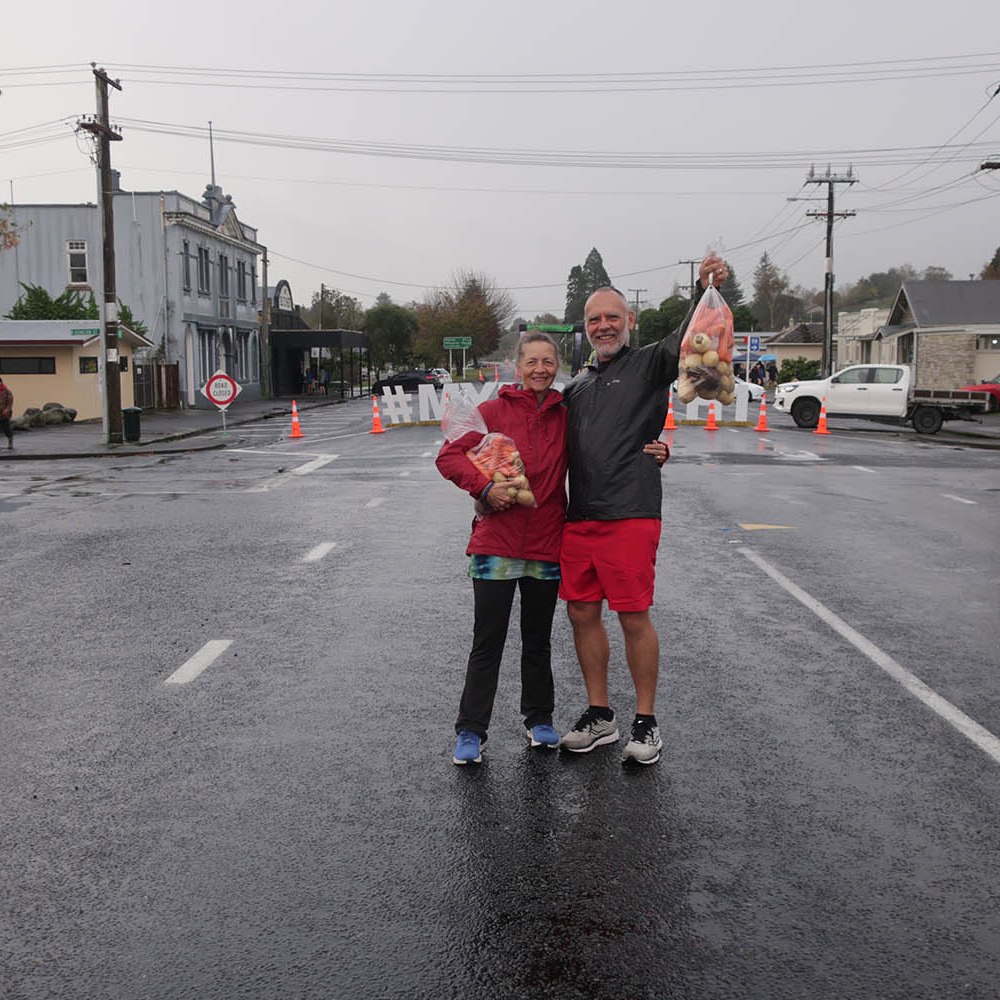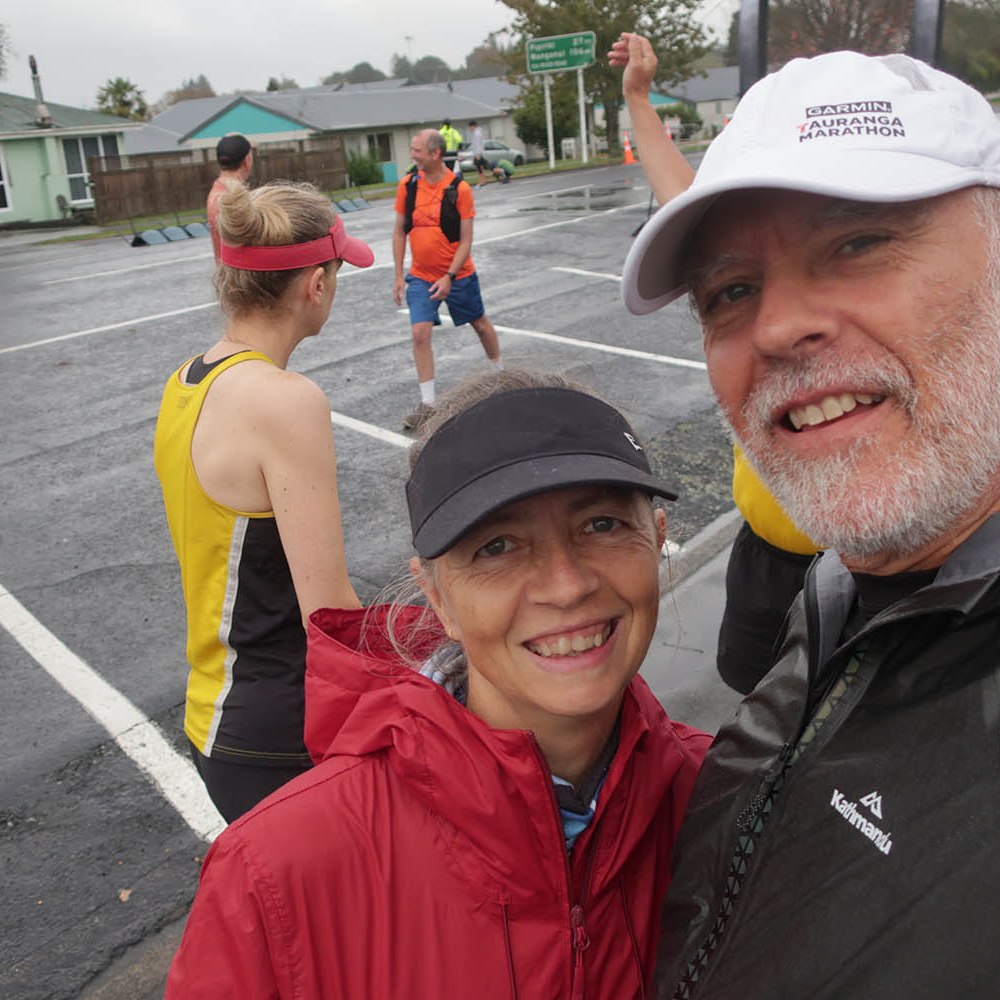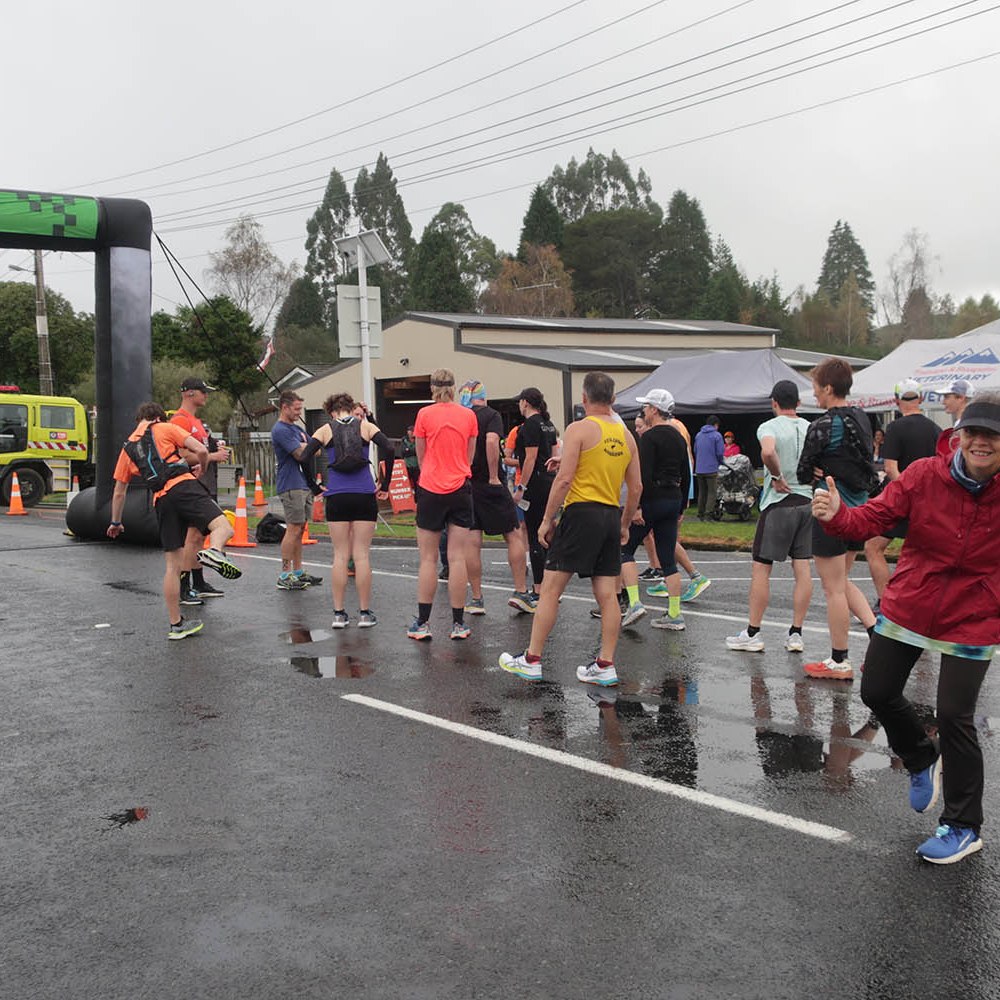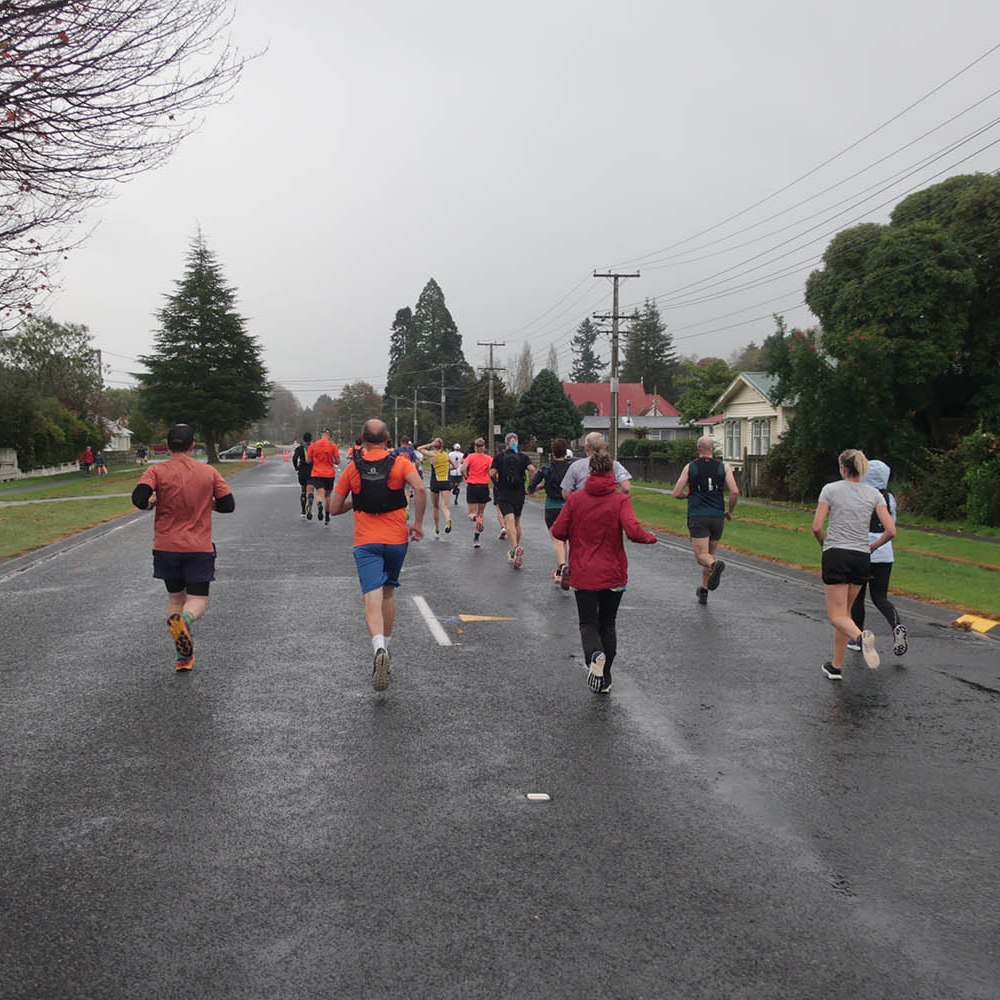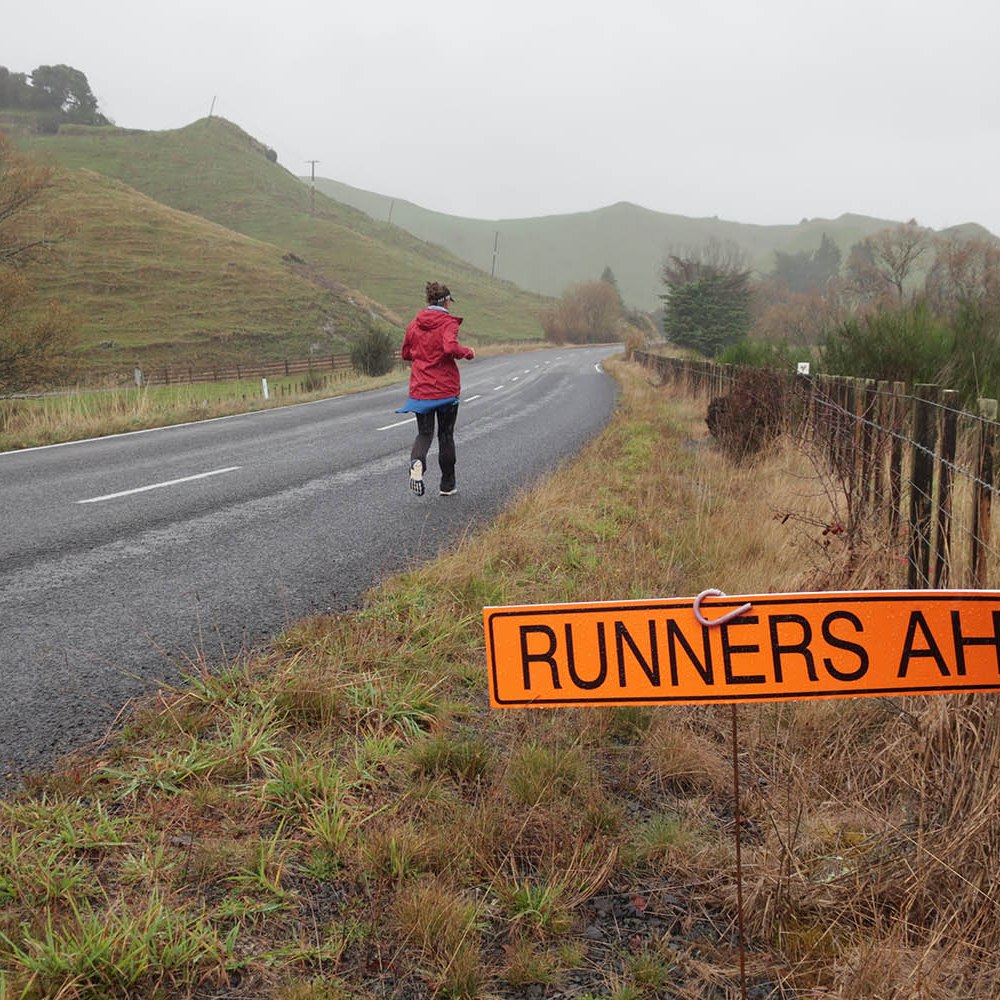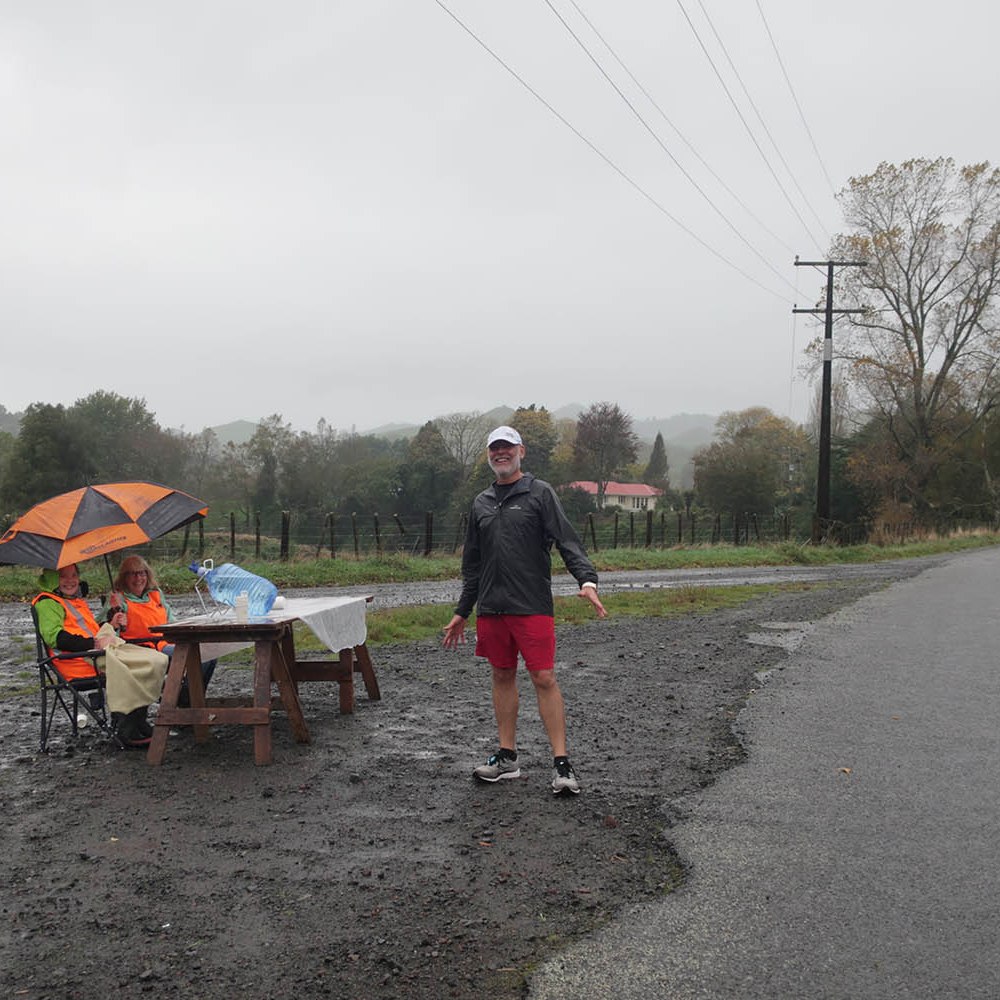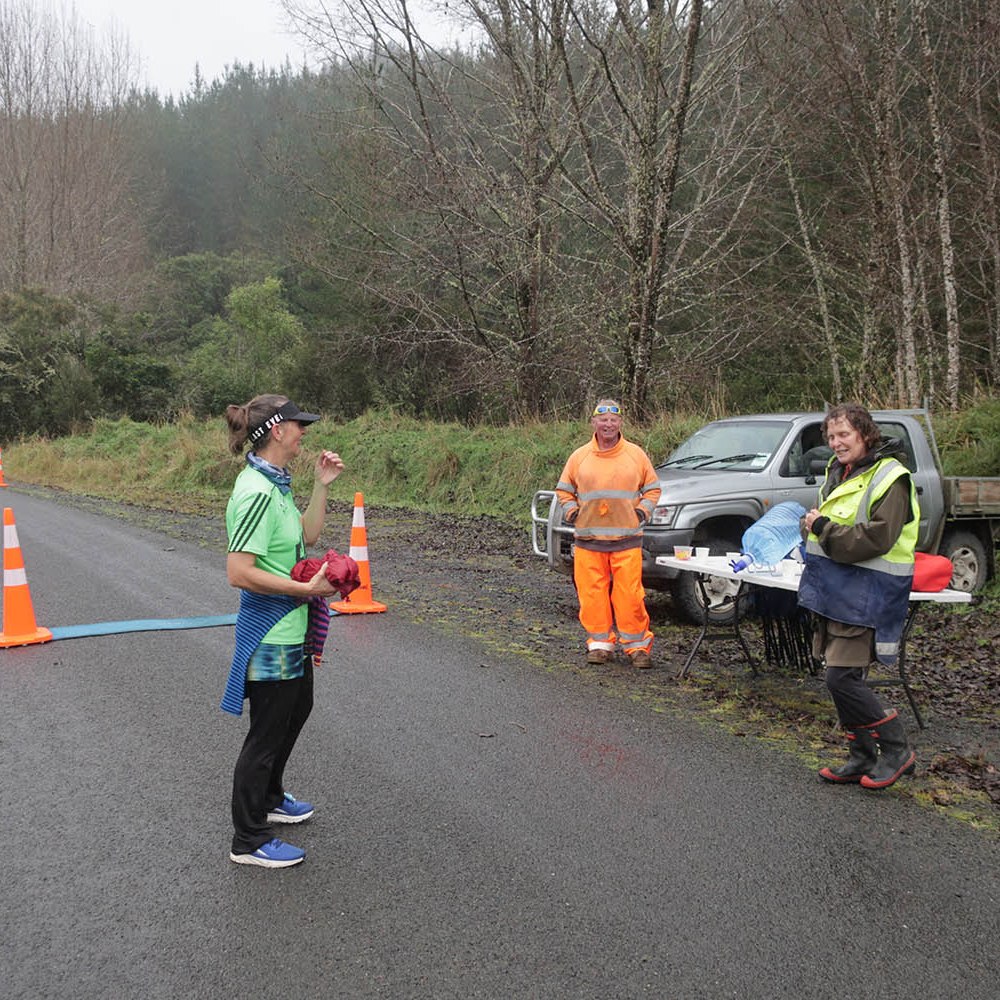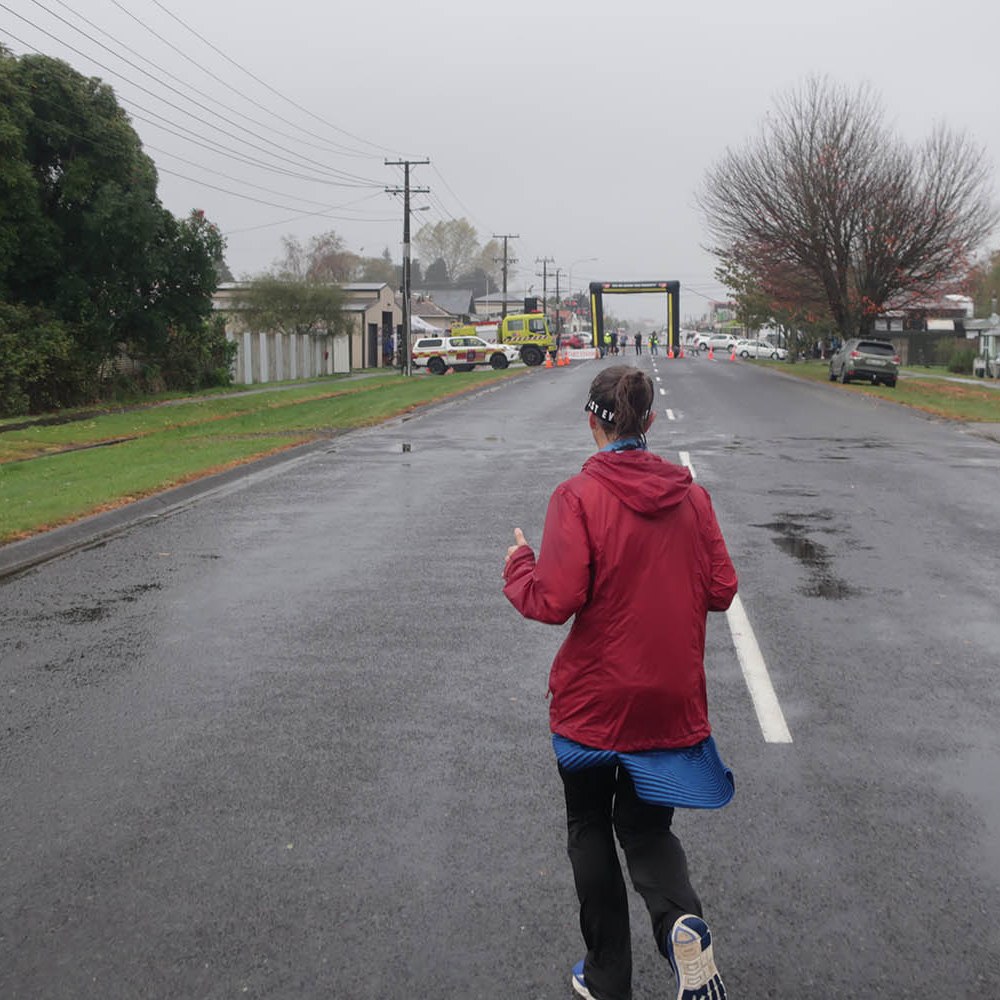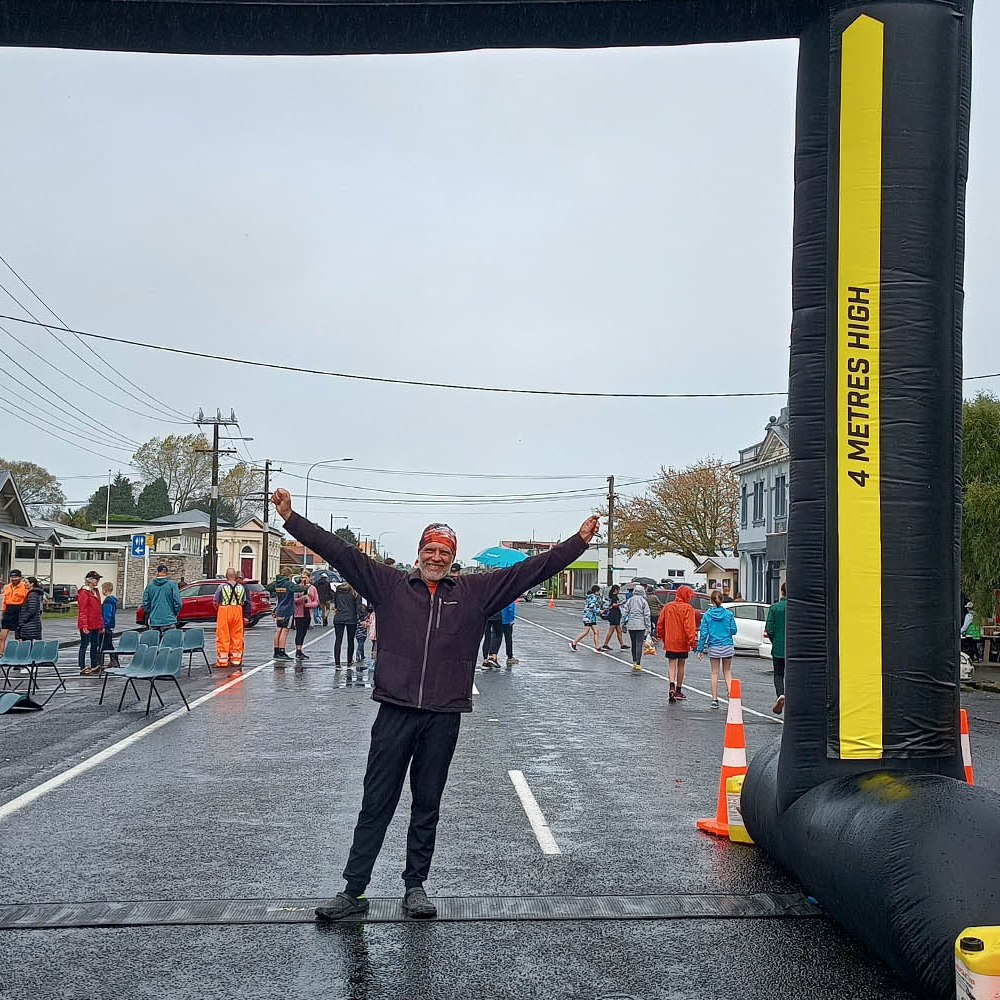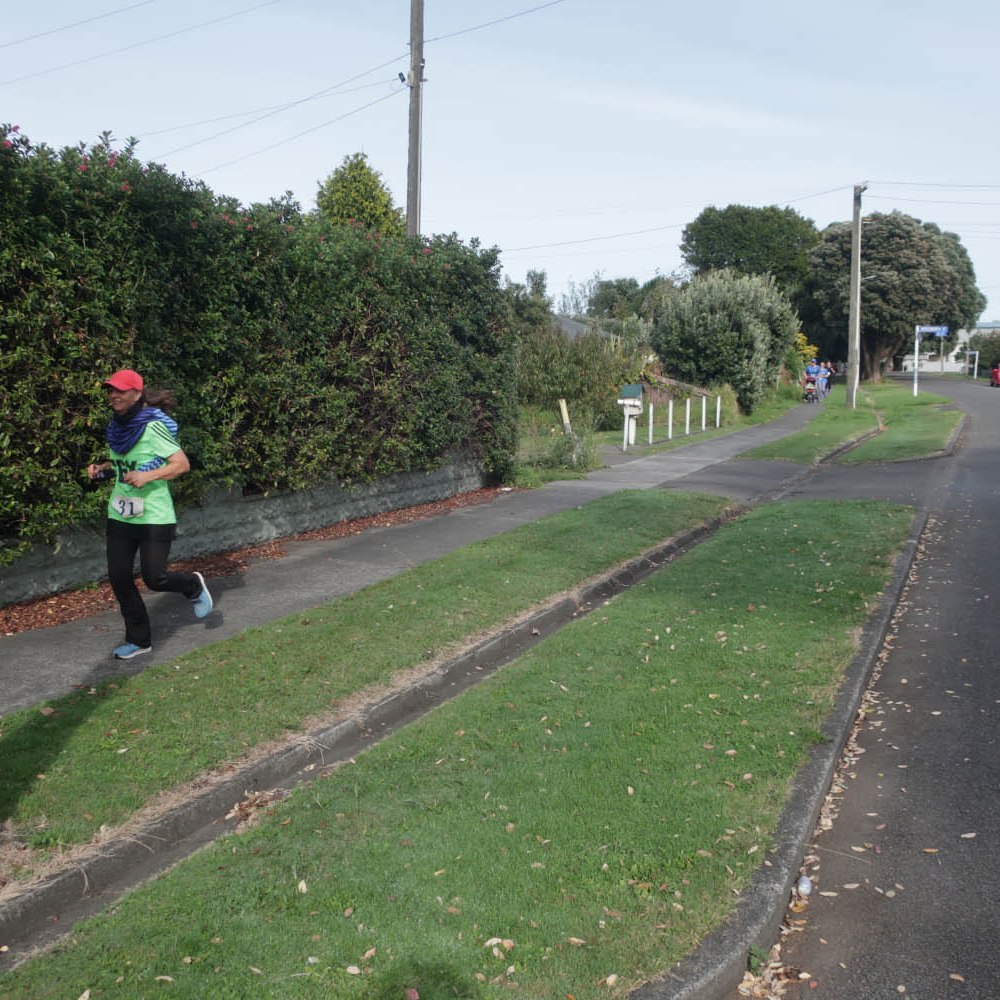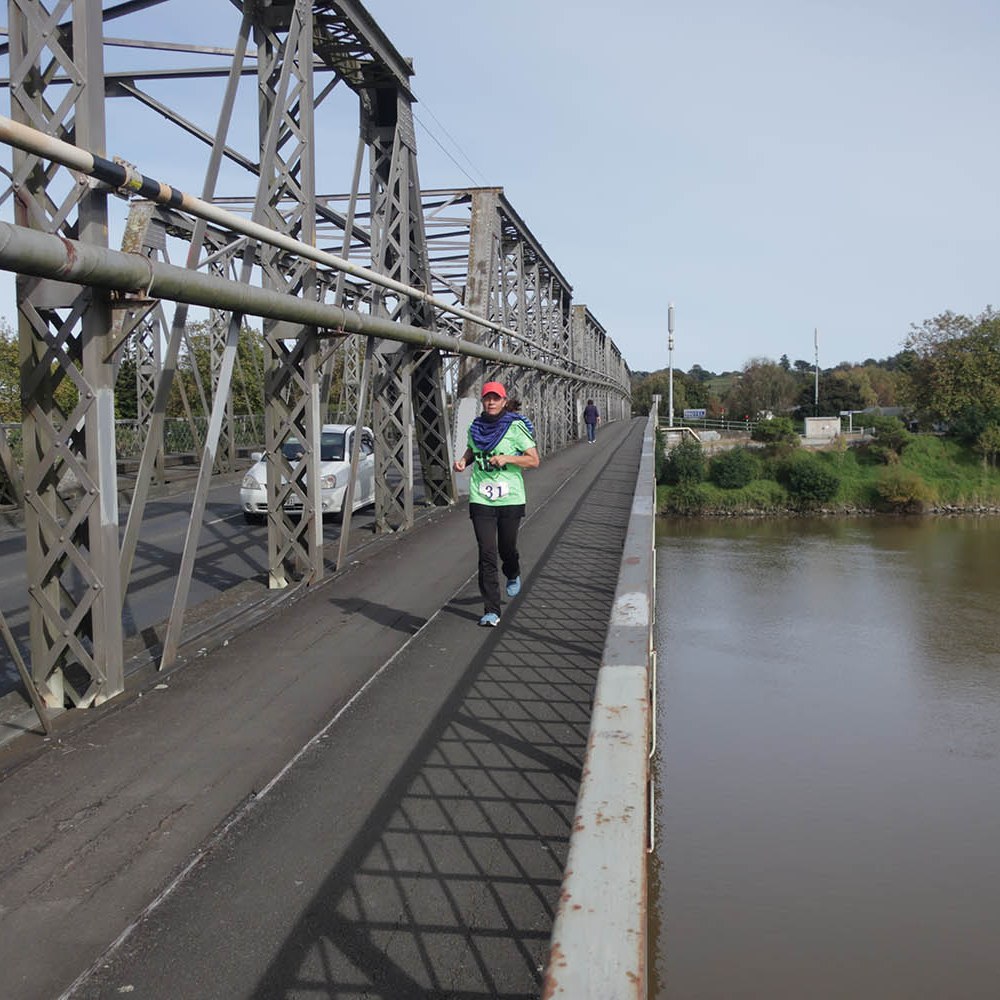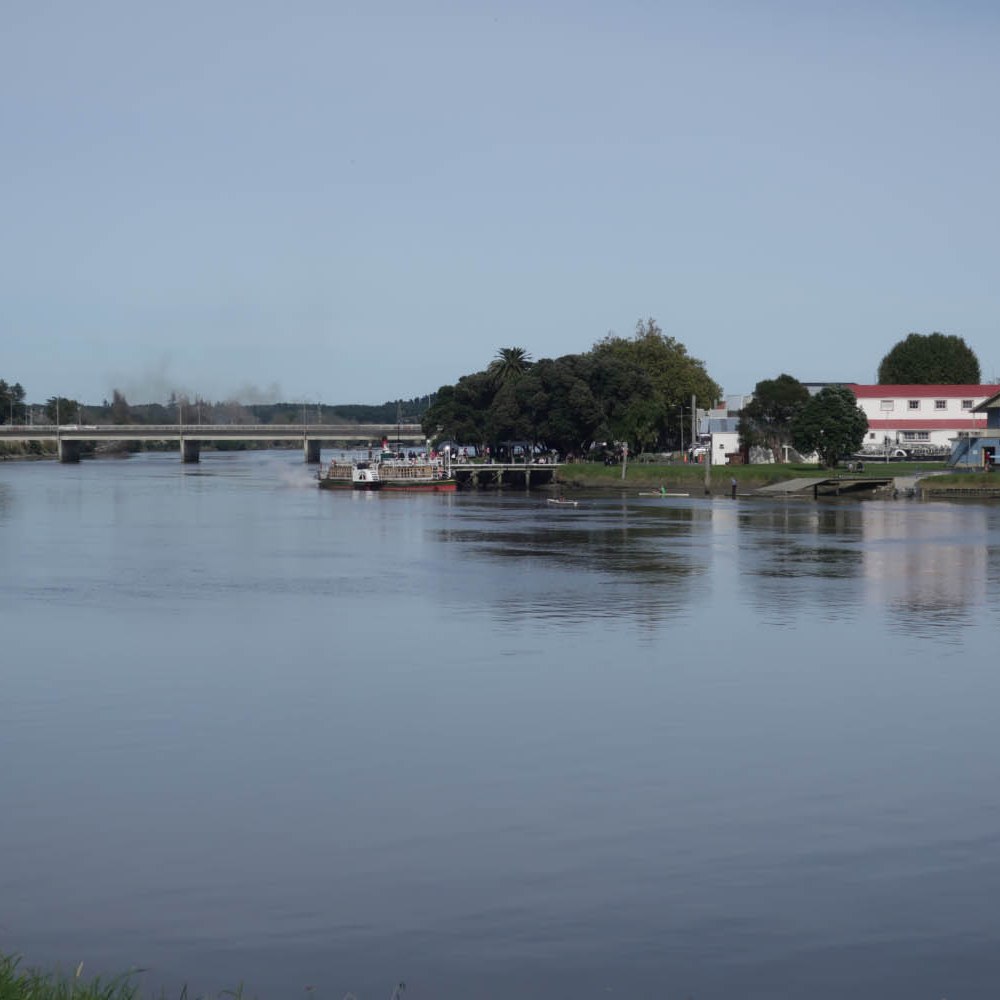Date: 16 September 2023
Distance: 50km
Time: 7:51


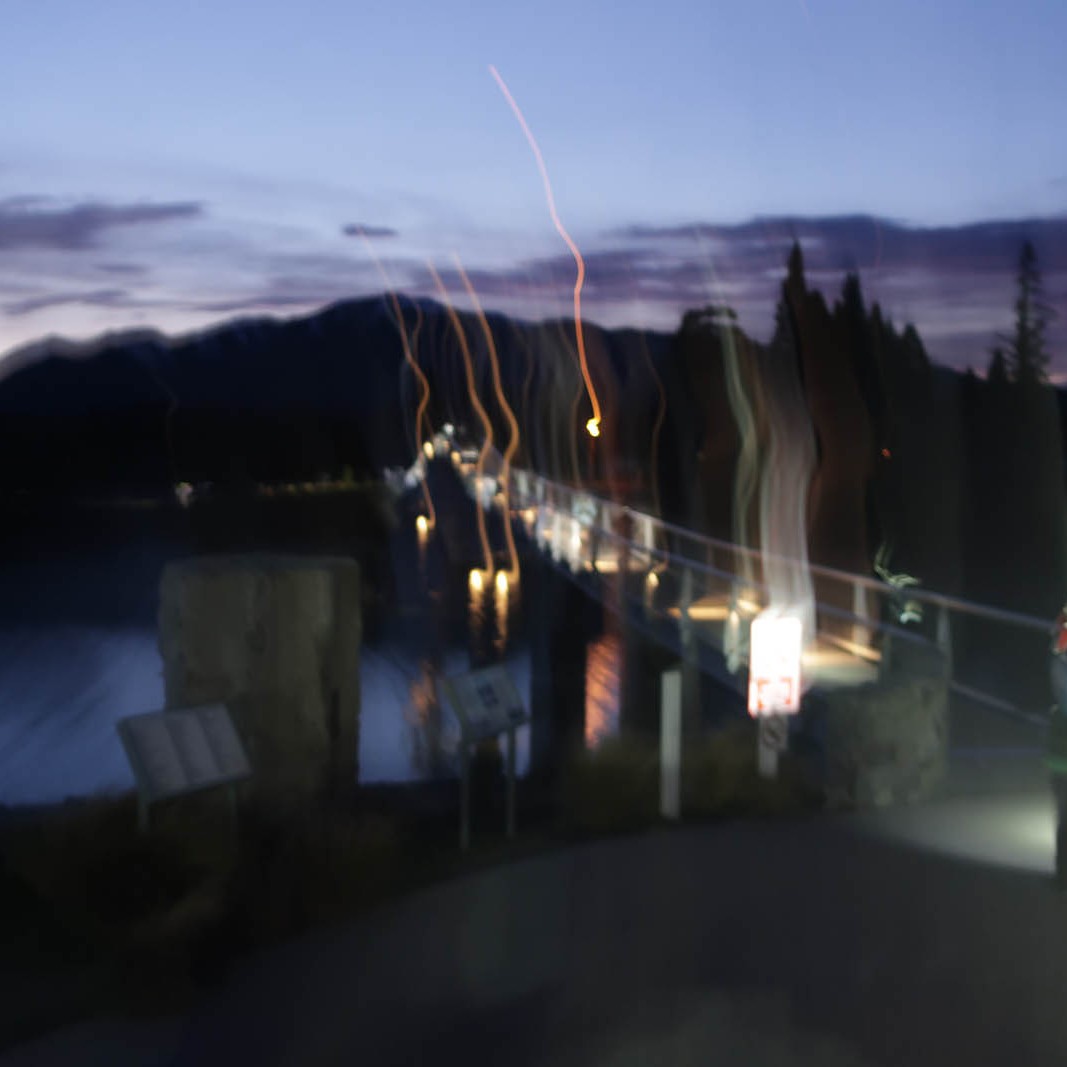



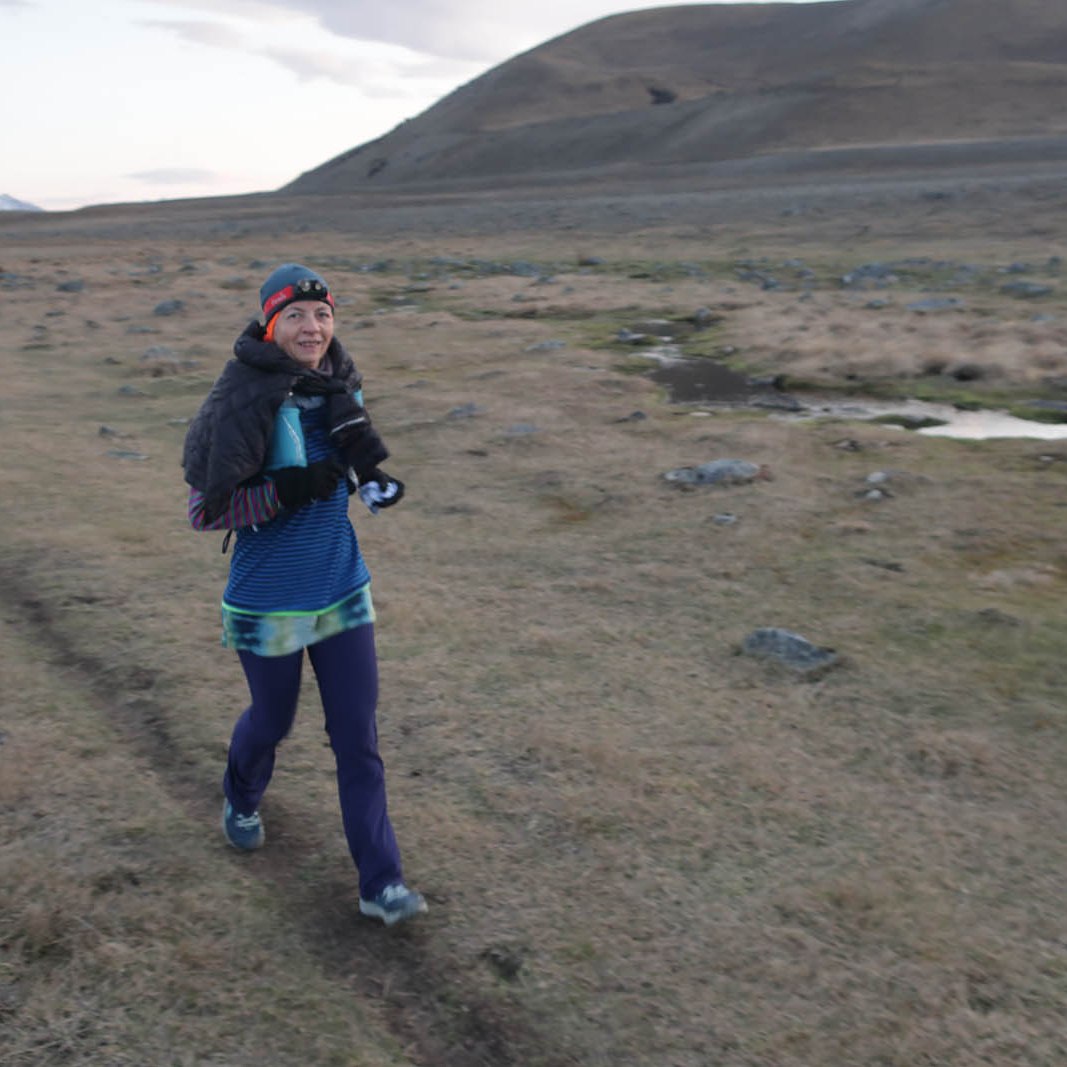
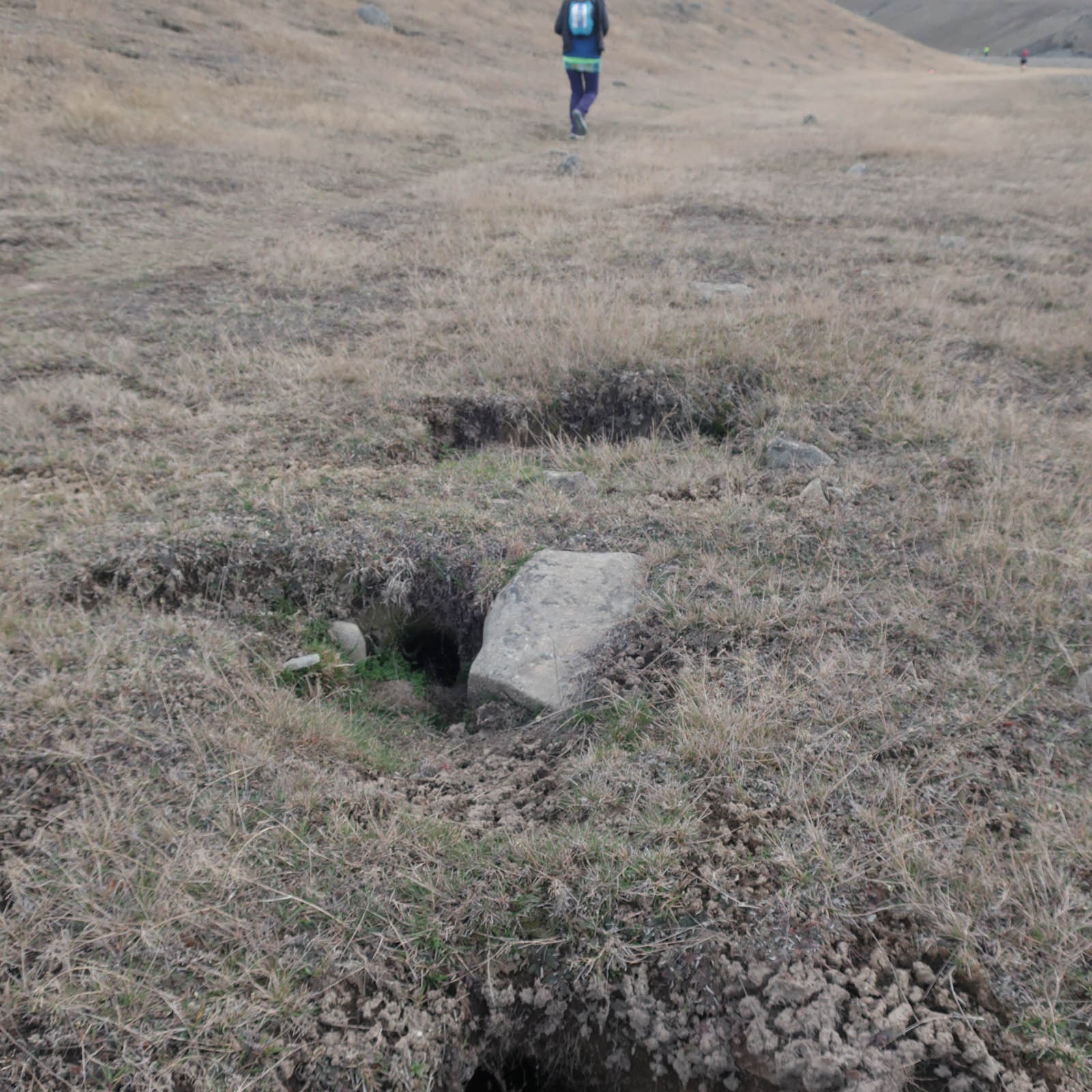



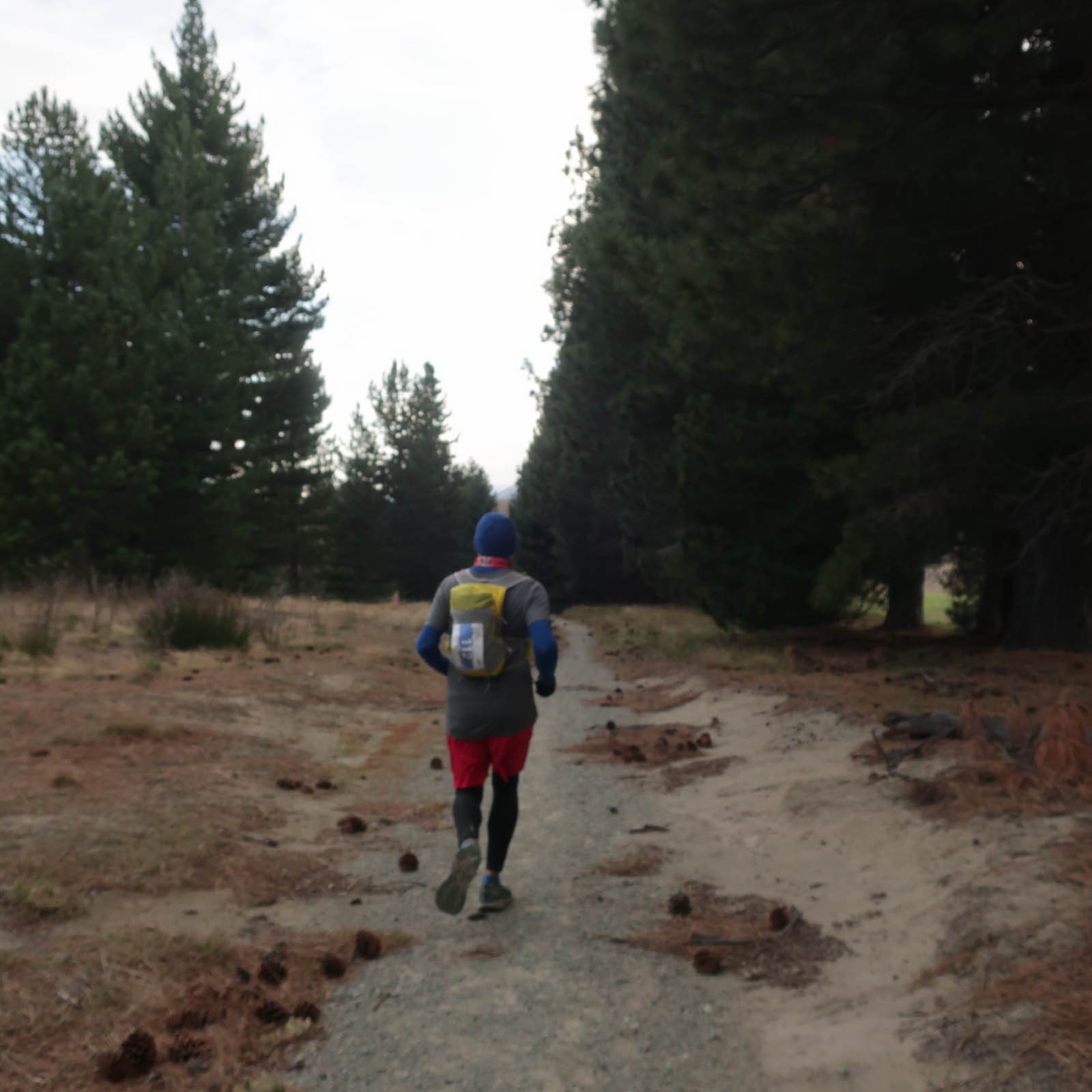
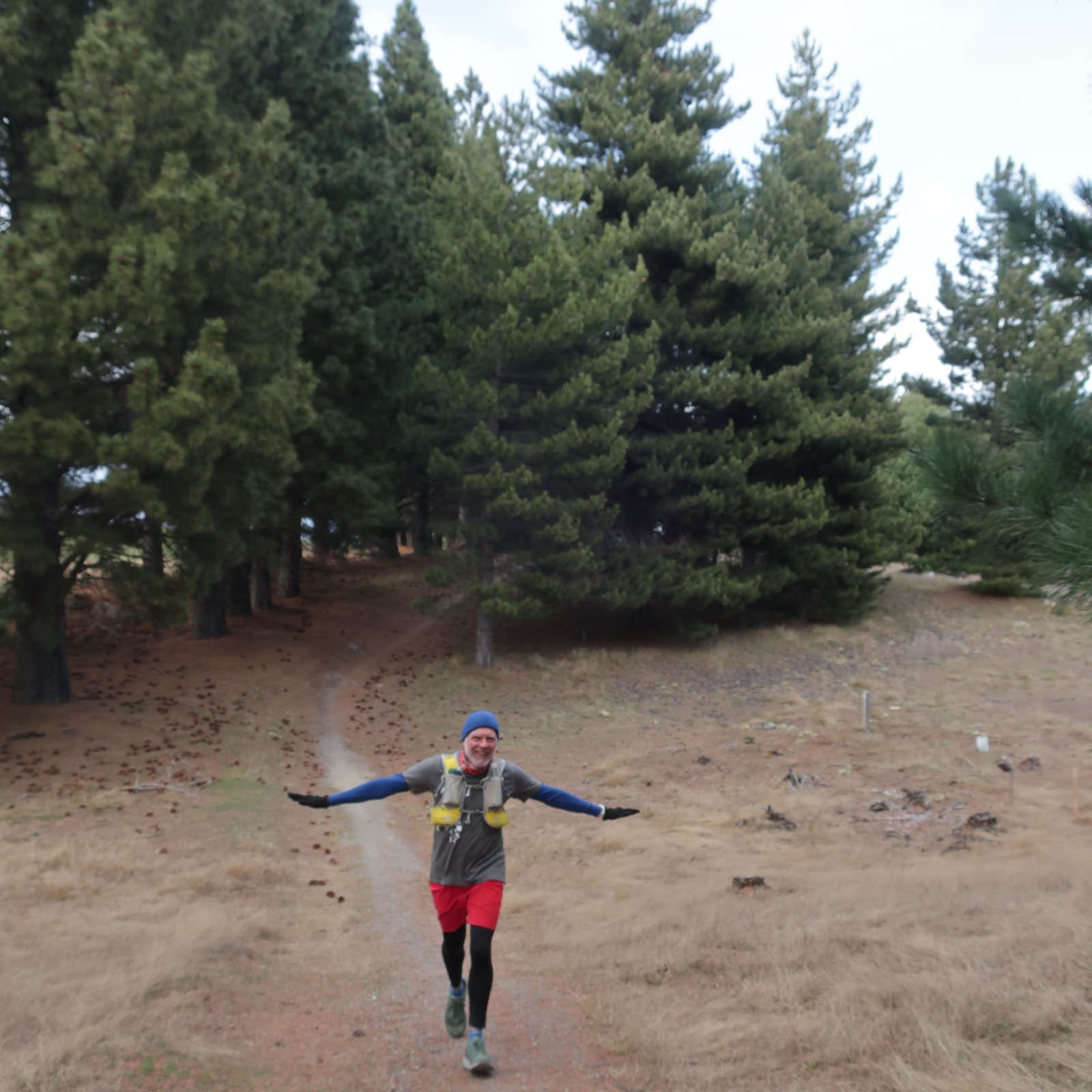

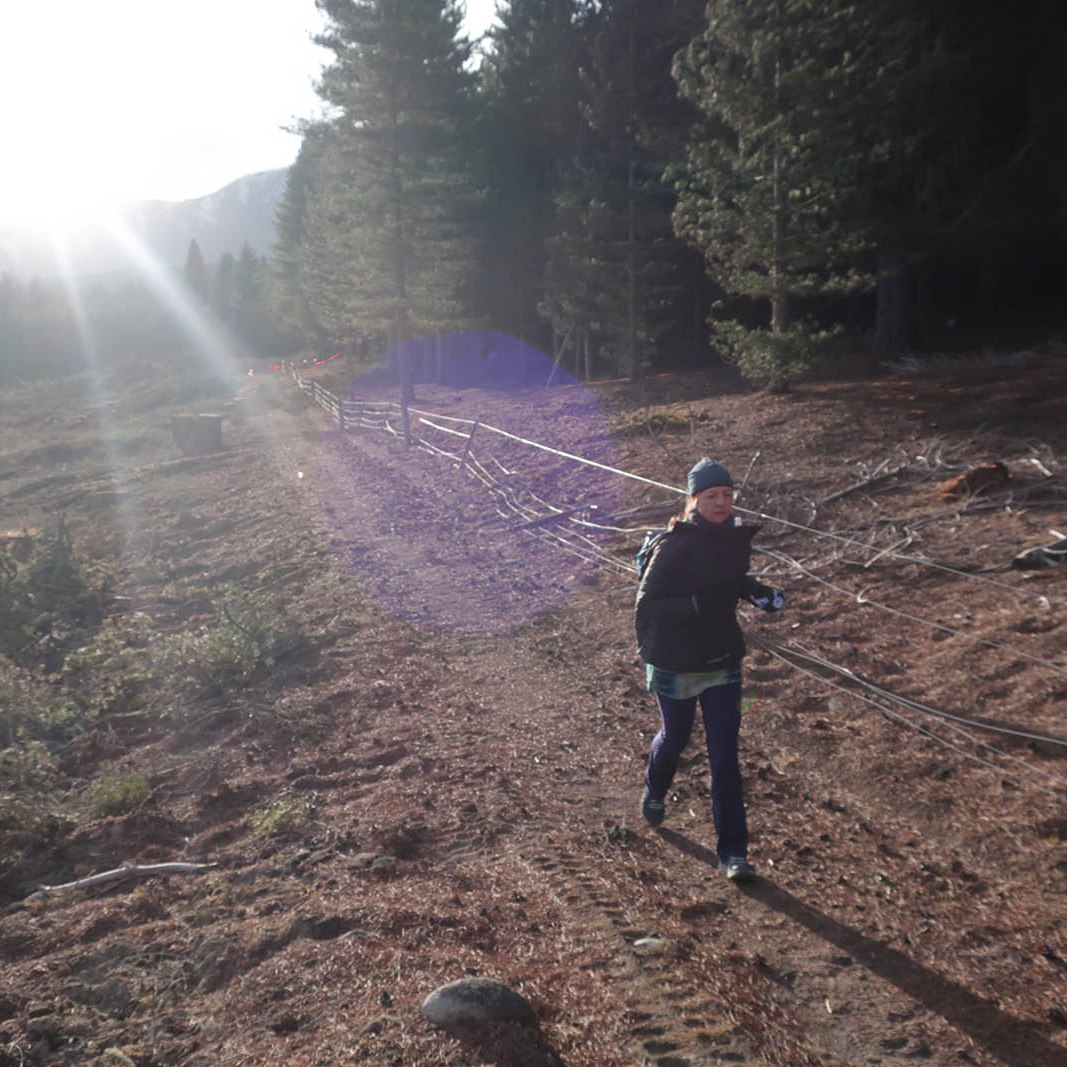
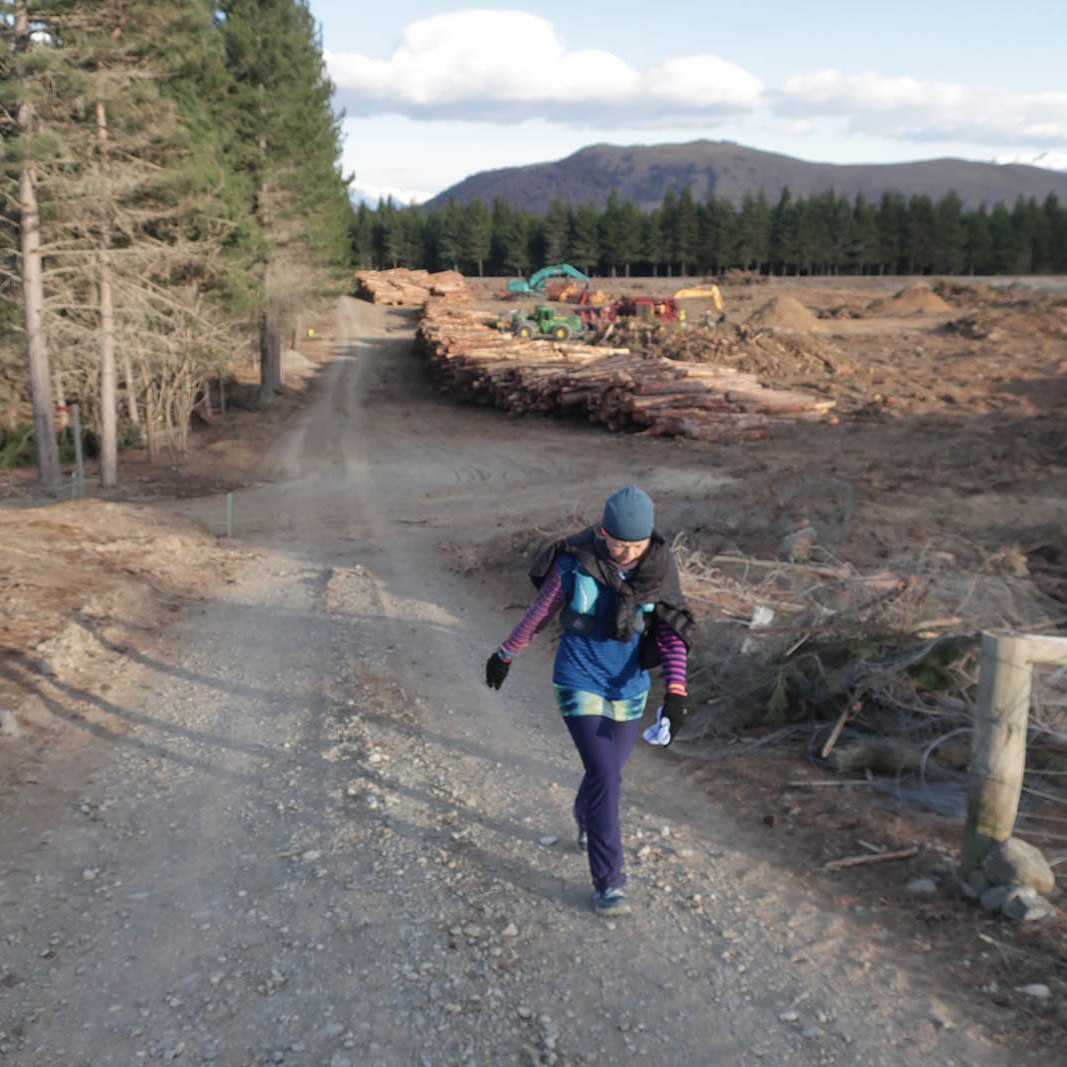



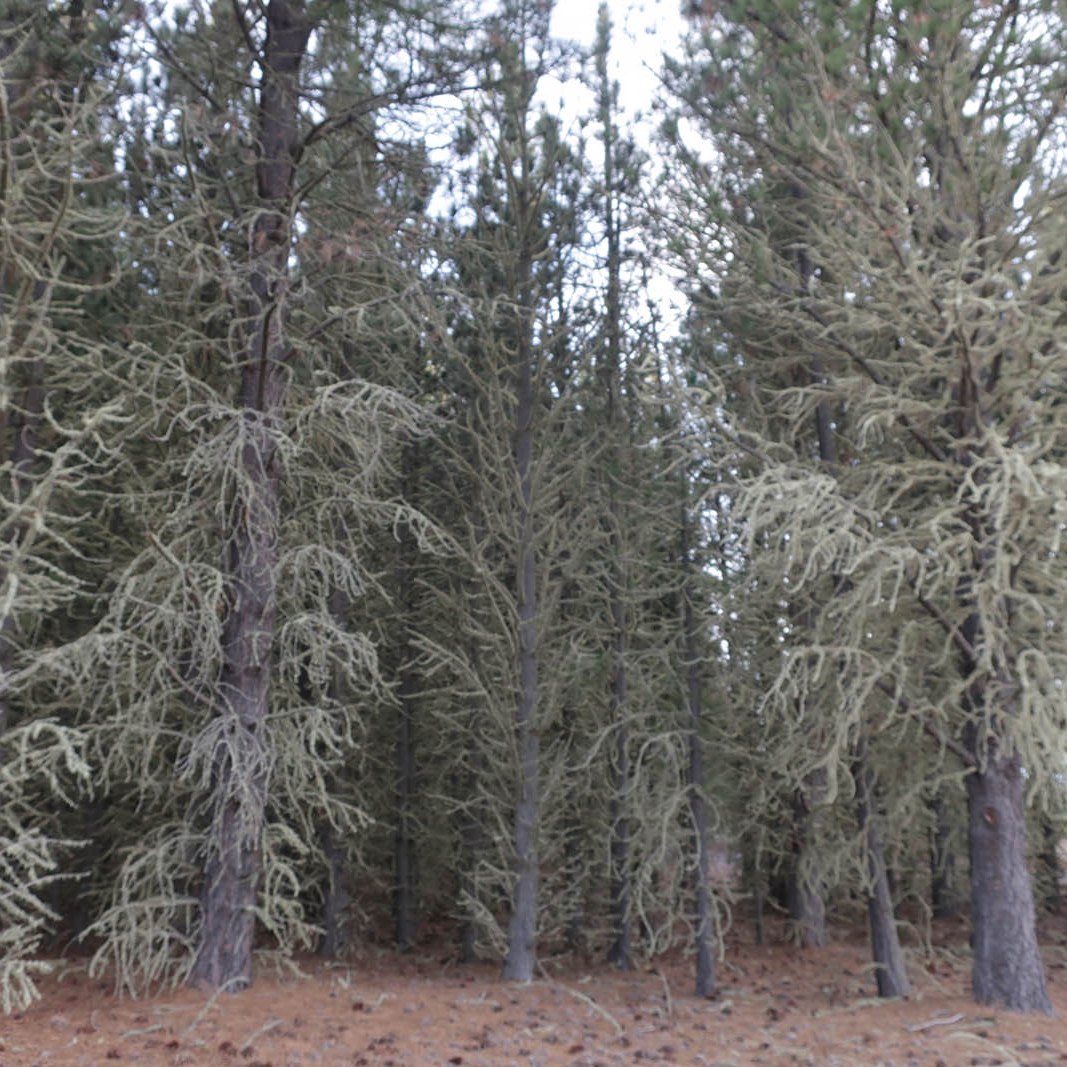
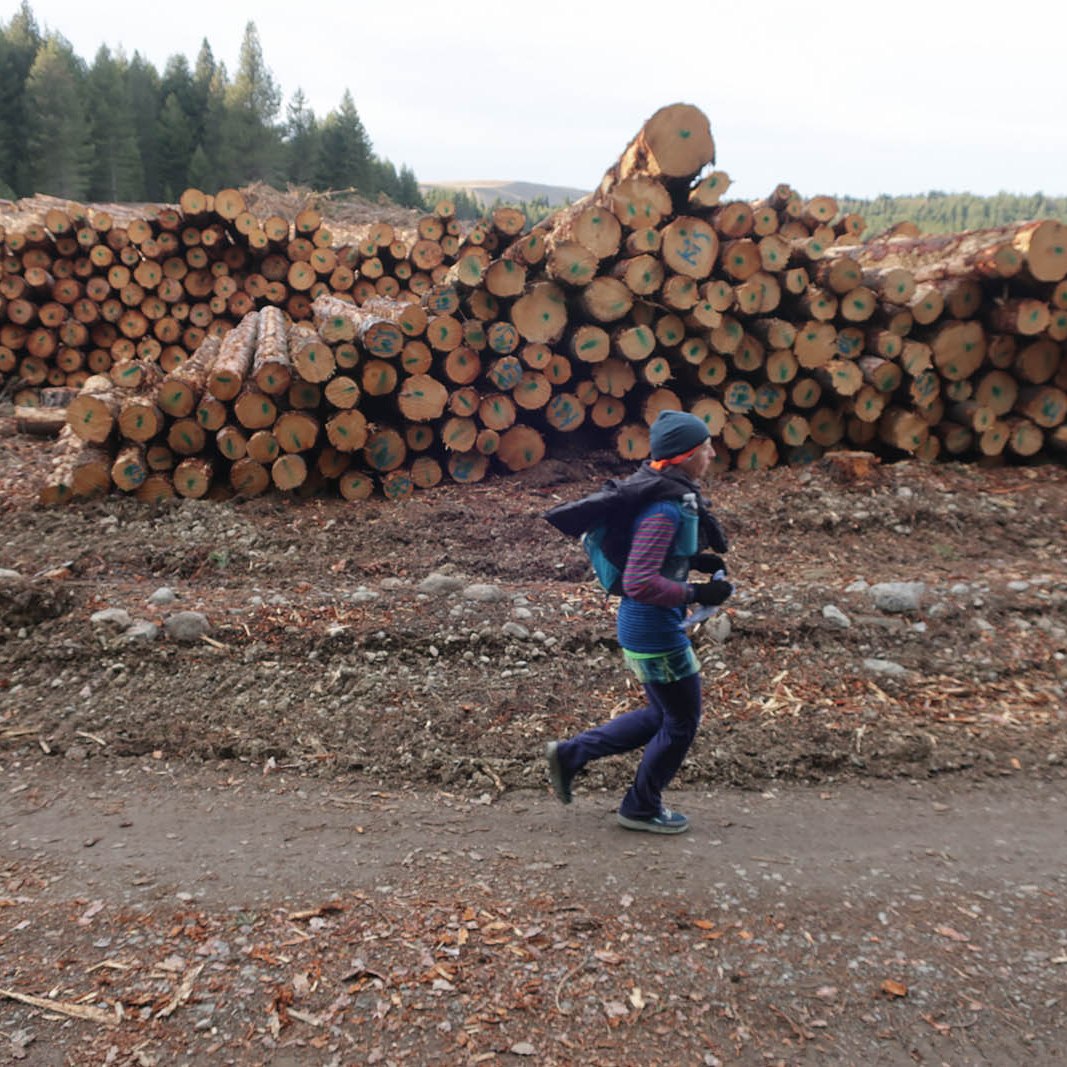
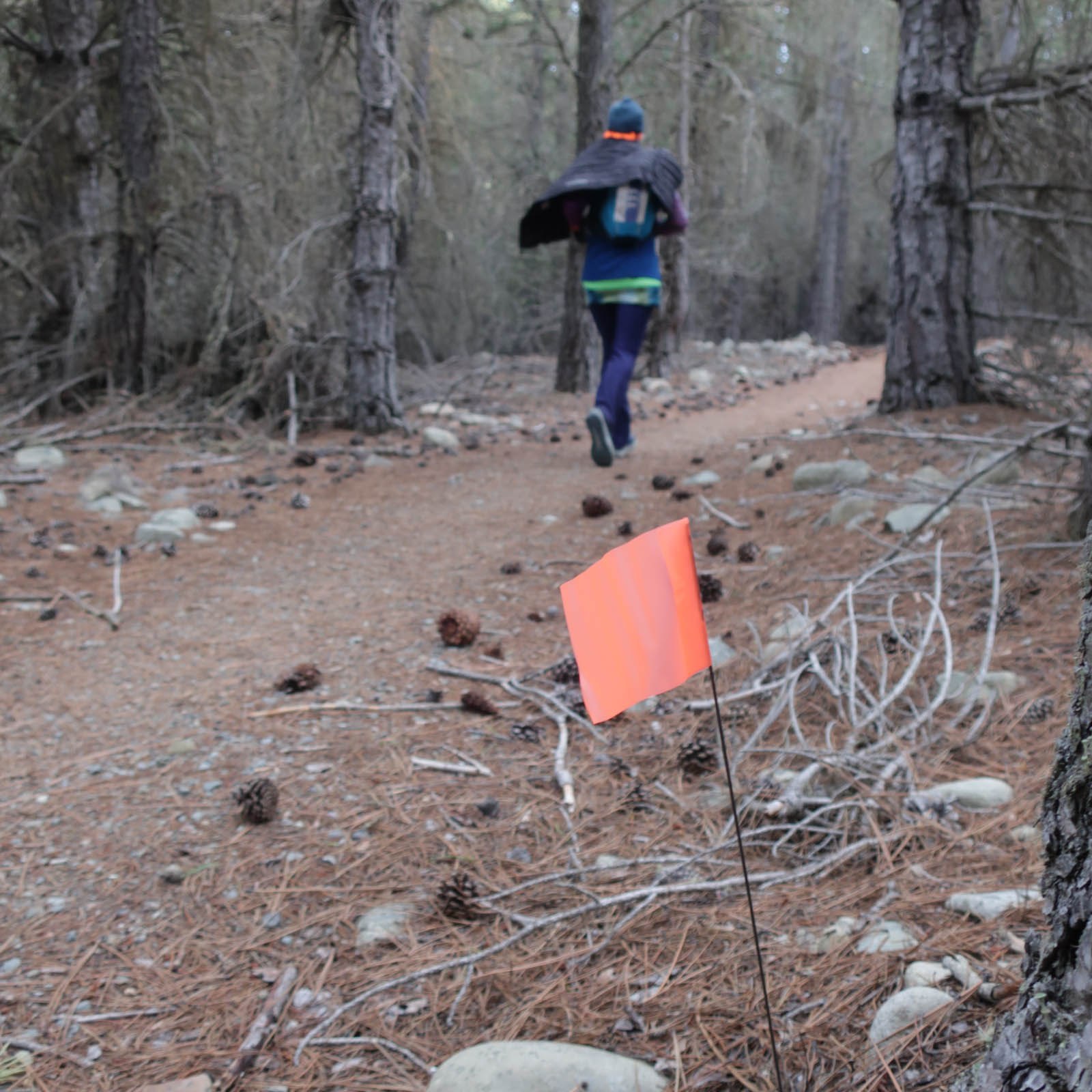
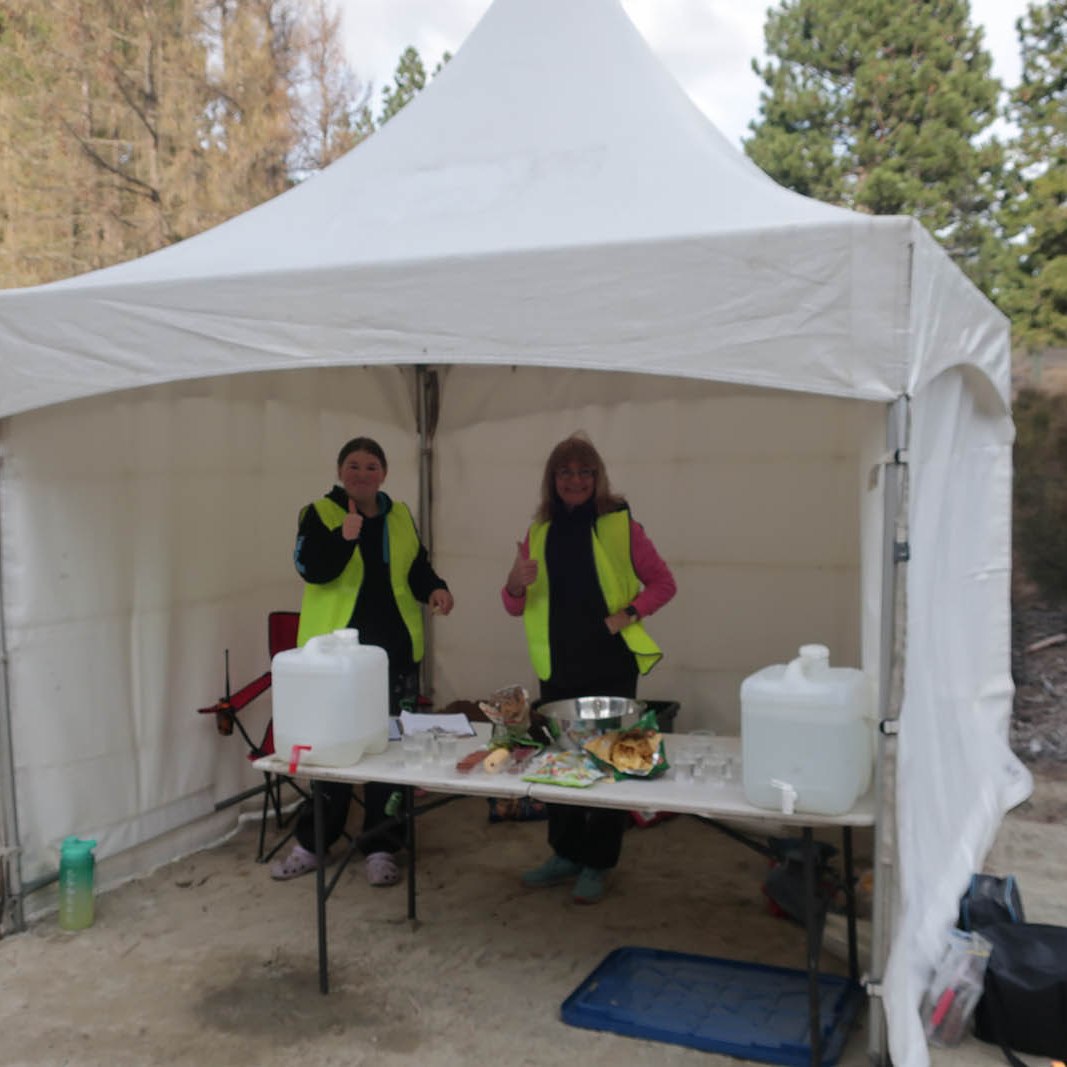
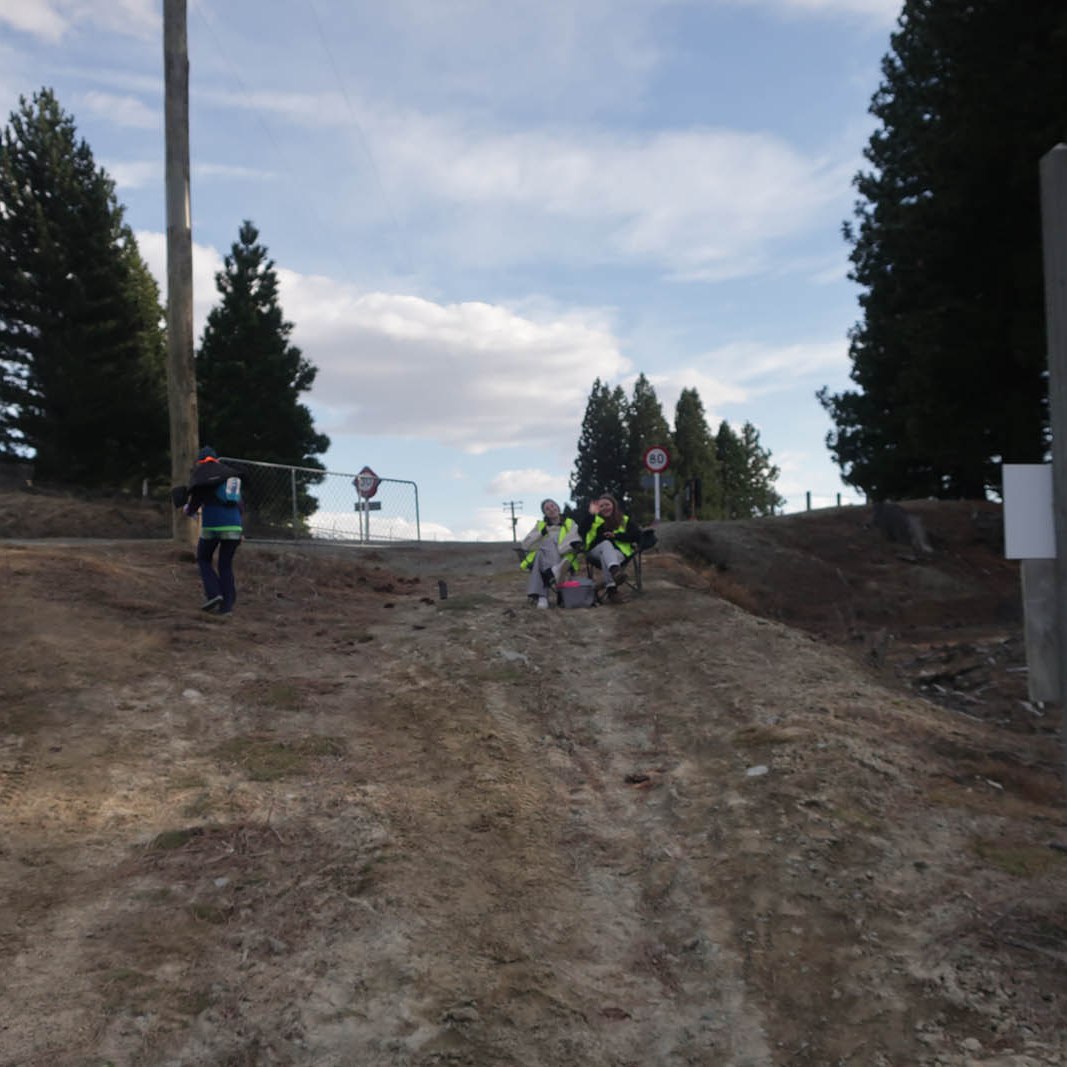

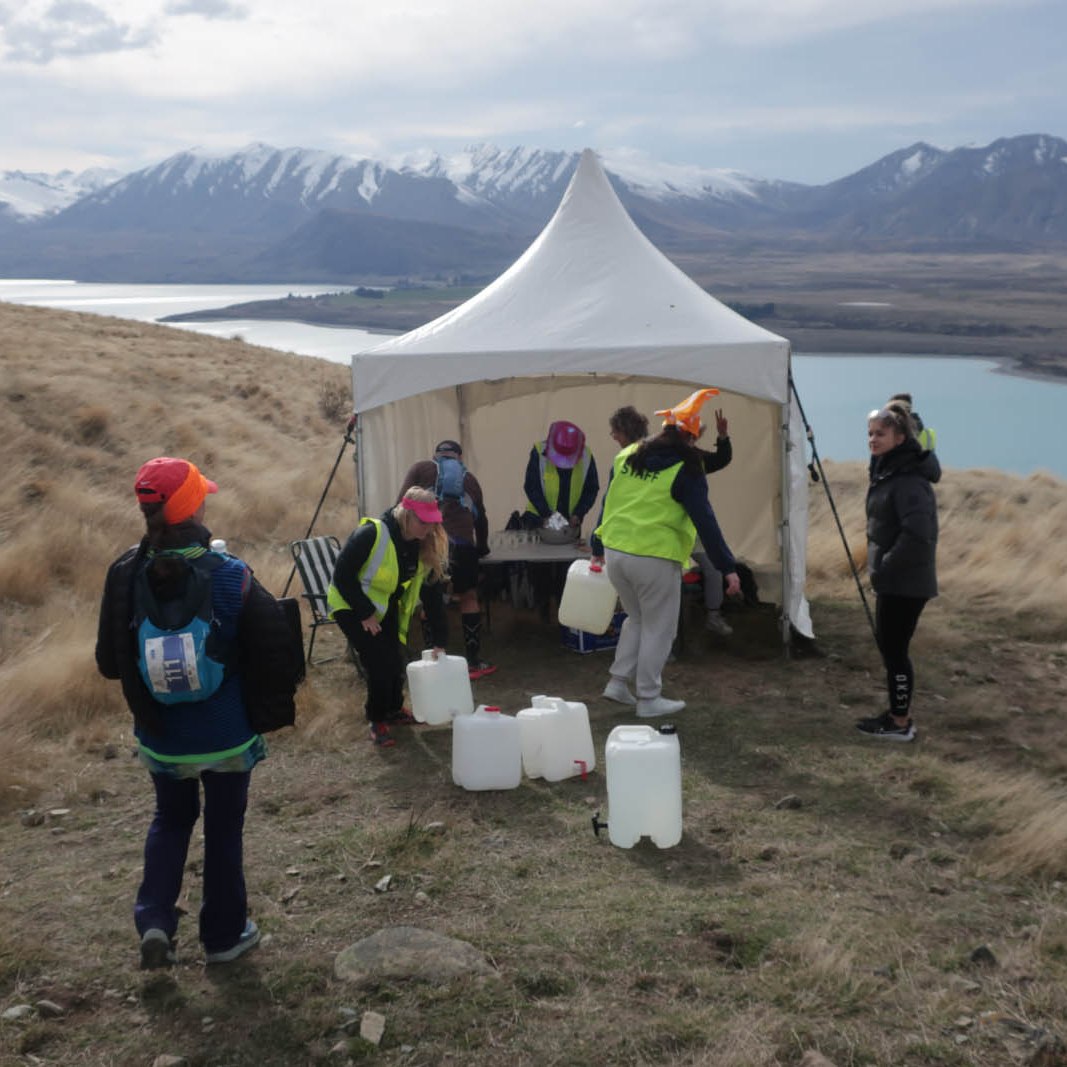





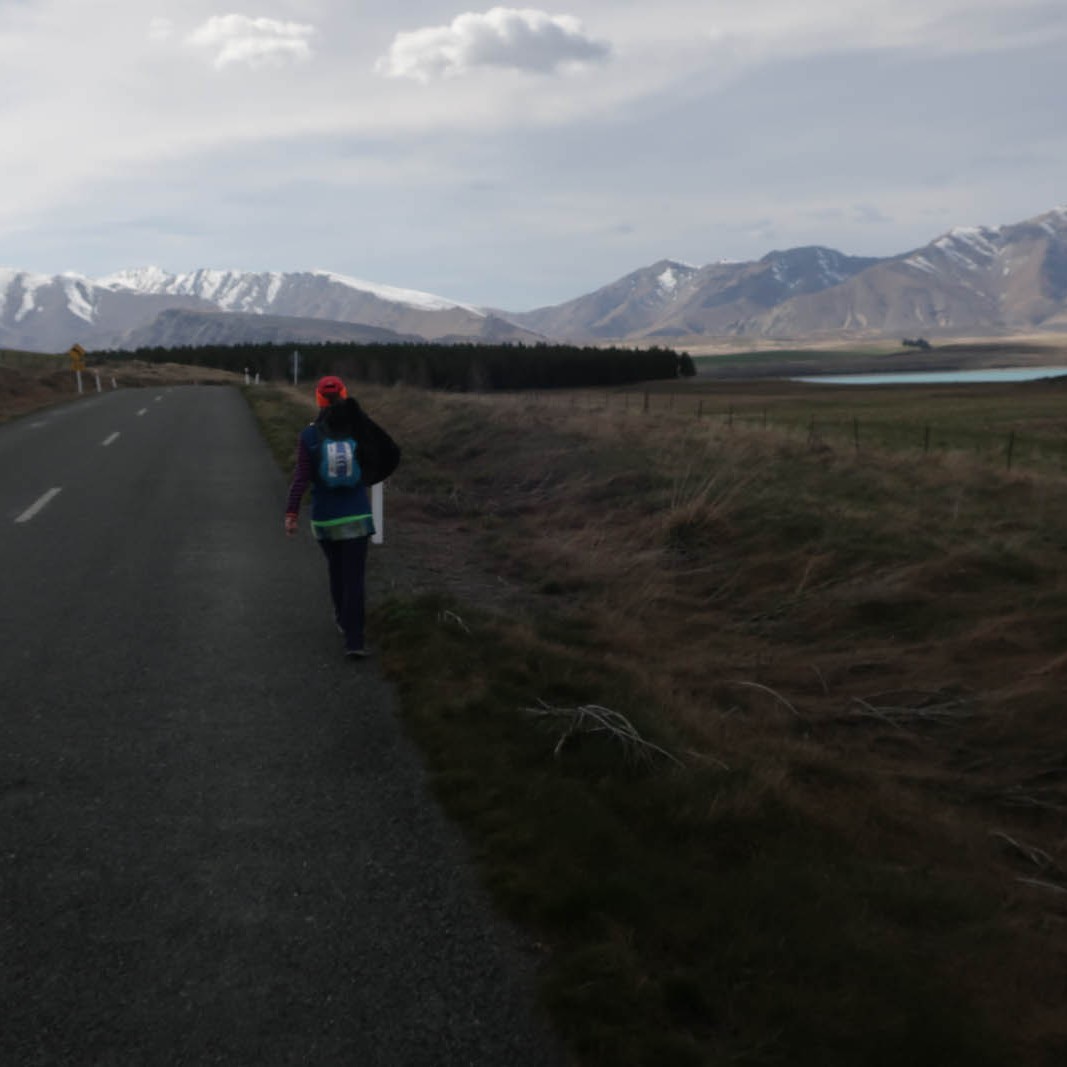



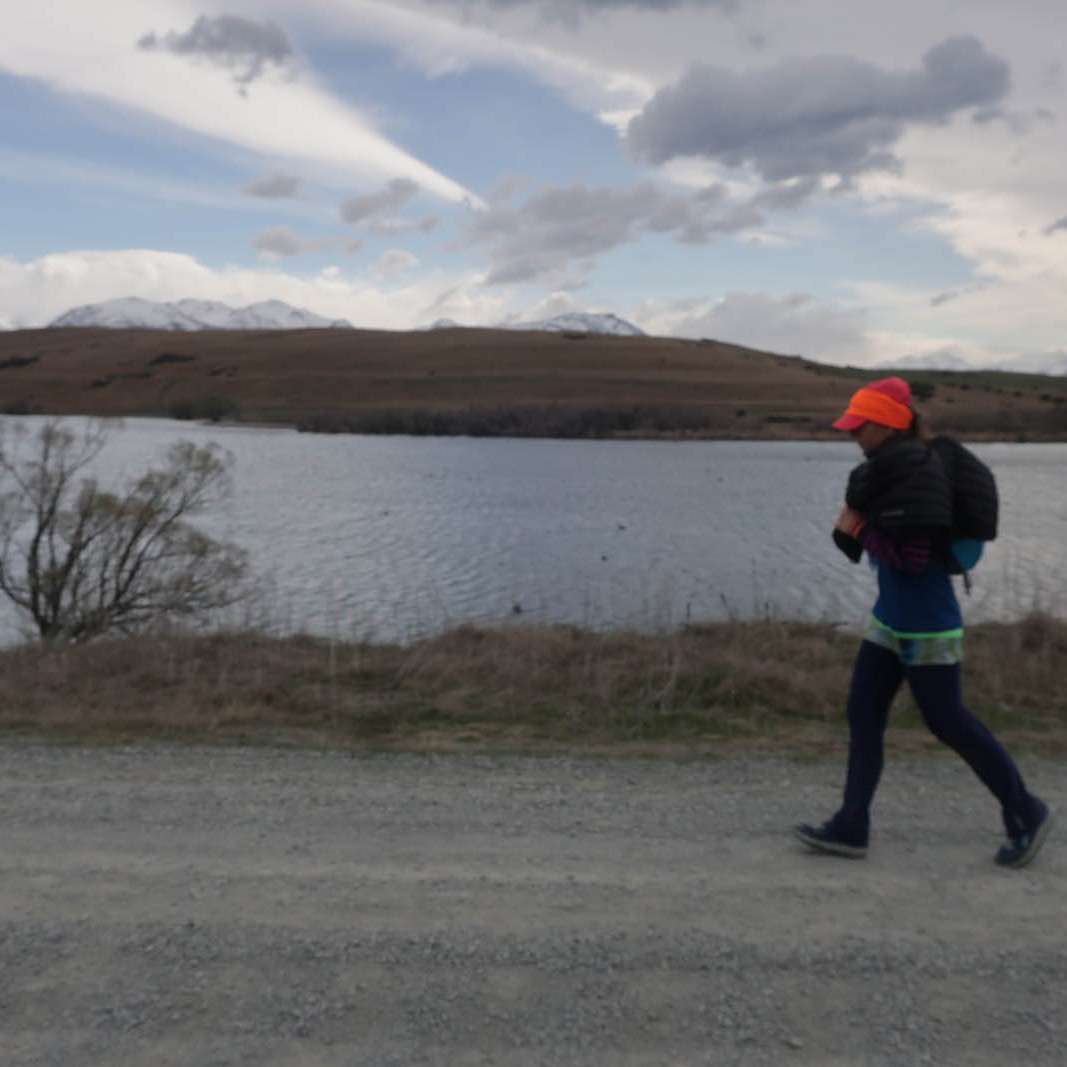


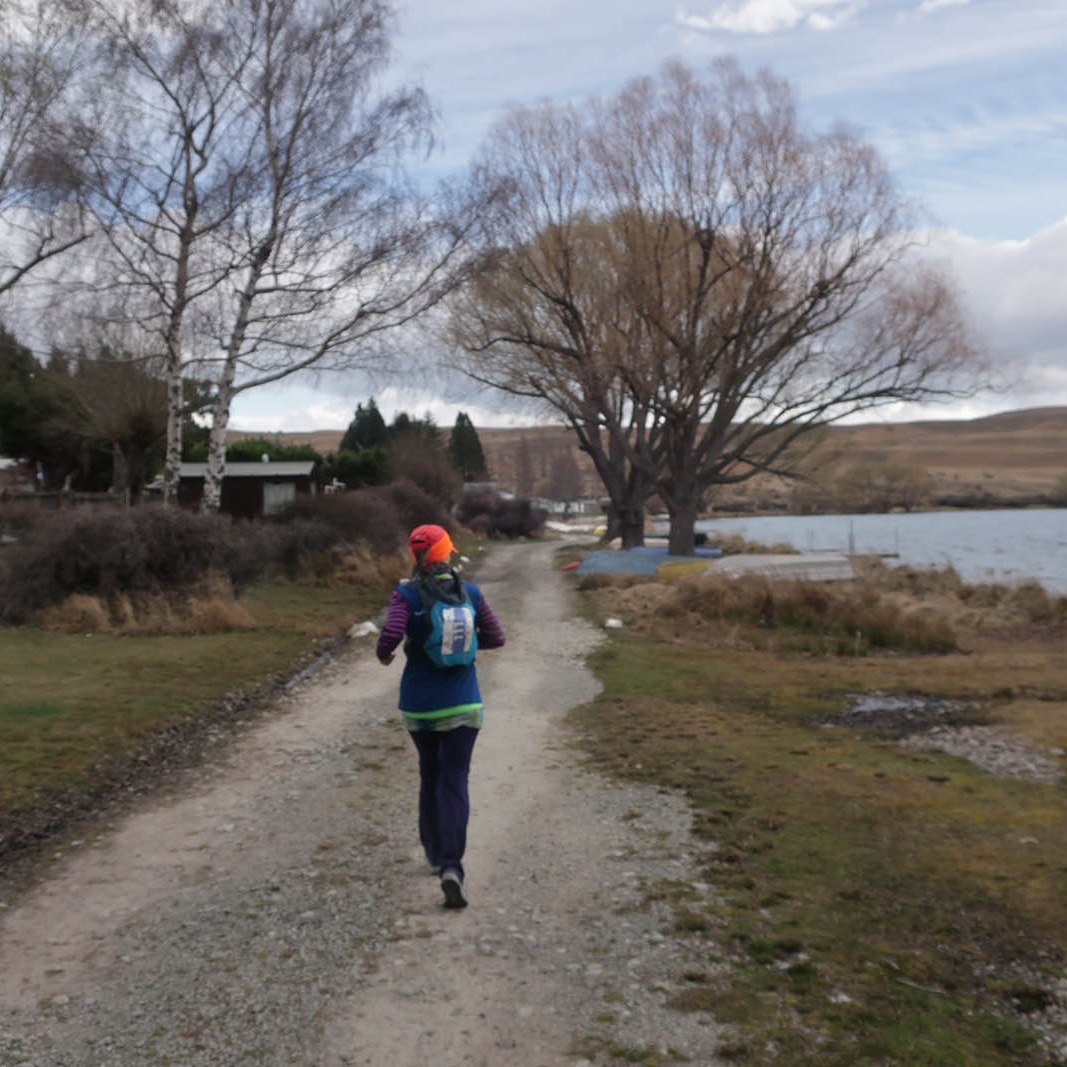




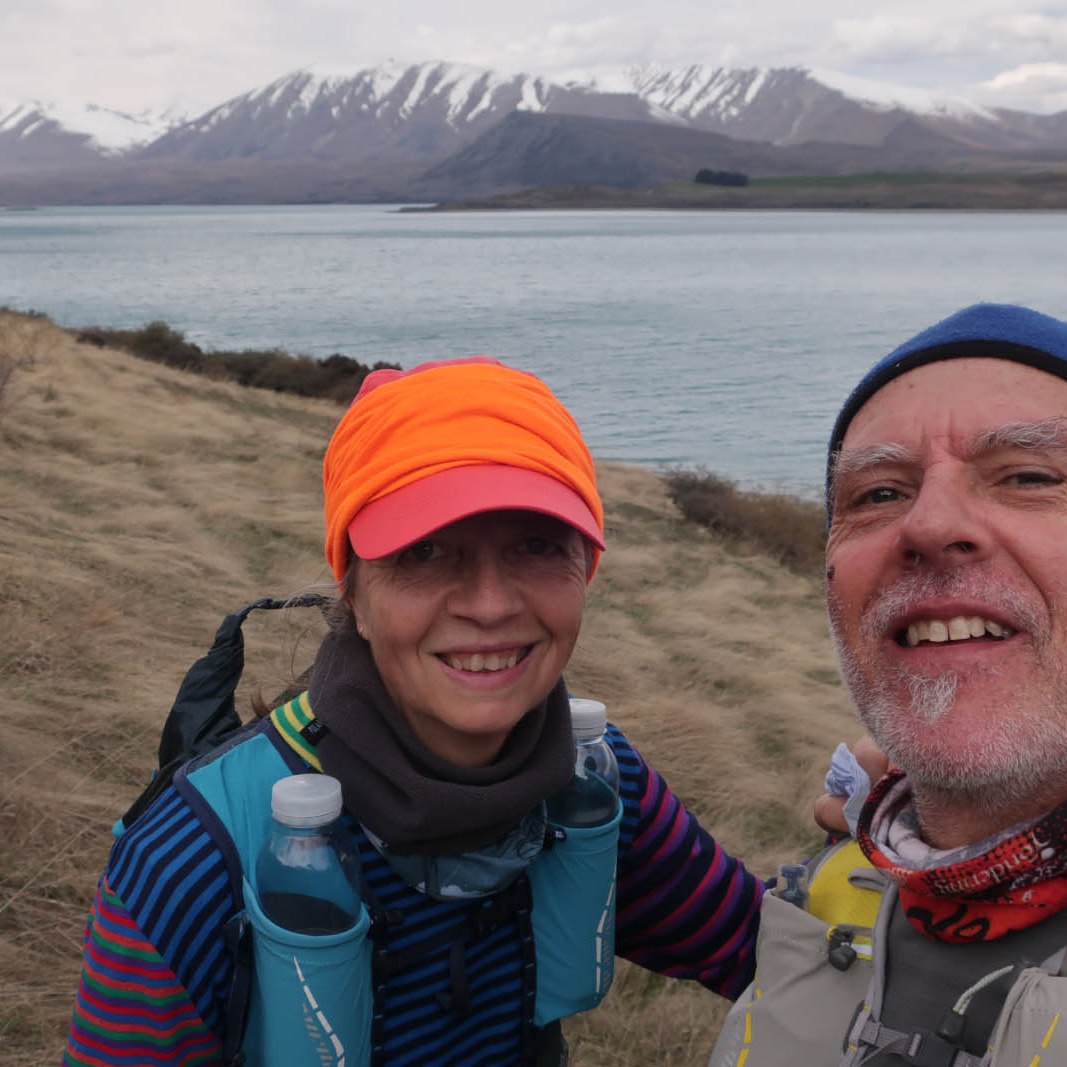

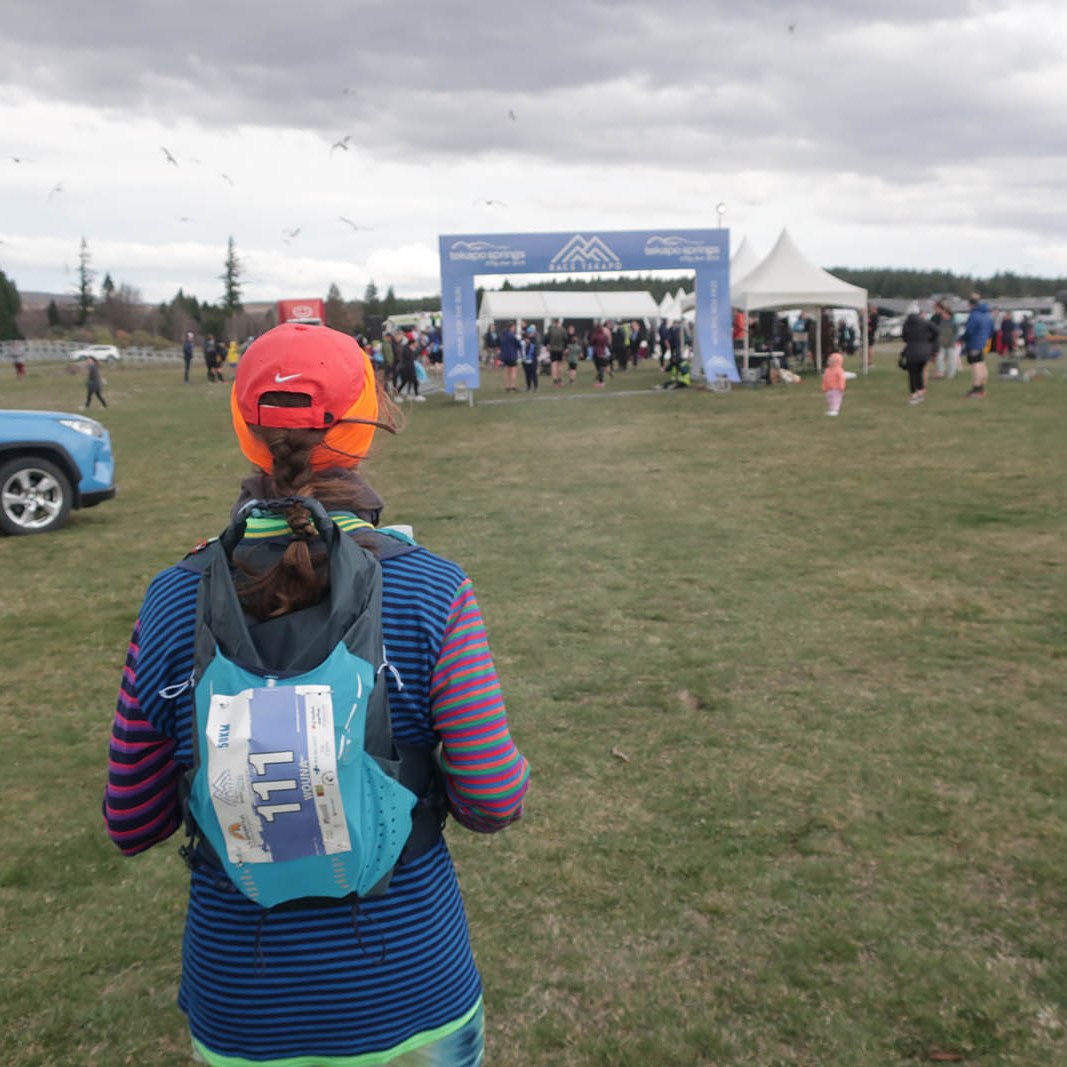

During the week leading up to the event, we followed the weather predictions closely, and things were looking increasingly grim. When an outing like this starts to get into the thousands of dollars, you don’t want anything to derail your plans. Winds of up to 100km/h (130km higher up the mountain) and a possibility of rain starting from 1pm were in the forecast for the event, according to YR. MetService had the rain starting at 4pm. We had all our compulsory gear, plus a few more layers (yes, I’m a wuss when it comes to extreme weather), and were crossing everything for not too bad weather.
The trip down was fine, but exhausting. We flew from Wellington early on Friday morning, so had to get up at 3:40am to drive down well in time. The wind was blowing like no tomorrow the day and evening before, and I was worried trees might be down/on the road, increasing our travel time. Fortunately nothing of the sort, and we could drive down in good time. The wind was still very strong, blowing our little car across the road, and I was stressing about the flight. I’m not a big fan of turbulence or sideways landings, but when we reached Wellington, it was calm and beautiful. I could not be more relieved. The flight was okay, a little bit of turbulence, with a decent landing in reasonable windy conditions, as Christchurch was more windy than I hoped.
When we walked out of the airport, the temperature was already a few degrees cooler than Wellington and Palmy. The rental car guy picked us up at the airport and drove to their place to sort the paperwork. Once we were on our way, we made by a quick trip to the supermarket for some last food stuffs, before making our way to Lake Tekapo. It is about a three hour drive and we were hoping to take it easy, stopping along the way, and not feel too rushed. It was about 10am when we left Christchurch.
Not a whole lot was happening along the way, and not many towns to stop for coffee or a breakfast. Most places were still closed. Fairlie, on the other hand, was bursting at the seams with queues out the door at some eateries and coffee shops. After a walk through town to find some hot chips and coffee, we eventually gave up and decided to stick to the bread, cheese and salami we bought at the supermarket. Why does one always want something other than what you have on hand?
We arrived at our accommodation at about 3pm, checked in, got our gear ready, and walked the 750m to the event registration. Registered and with a bib, goody bag which included a race branded Thir headband (!), our compulsory gear checked and drop bags dropped off, we made our way back to the lodge as it was starting to get dark. While cooking dinner, we shared a cider, and cranked up the heaters.
The temperature was already in the single digits and dropping though the night. Prediction was for minus one at the start of the race. When we got up, yet again before 4am, it was one degree Celsius. But the best part was there was almost no wind! It was obviously going to pick up sooner rather than later, but our 1.2km walk in the dark to the start was just very cold, not super duper cold from wind chill.
Race briefing was at 5:40am, and at 6am on the dot we were off – to the theme music of UTMB: Vangelis’ Conquest of Paradise. Haha. That was quite funny, but for the first few kilometres I was humming the tune in my head thinking, dreaming, about doing the UTMB one day.
From the start we went straight onto the walkway next to the lake, across a footbridge, past the Church of the Good Shepherd, and into the forest. The sun was starting to rise and by the time we reached the first aid station just on the other side of the forest (at 3.7km) we could turn off our headlamps. We ran a big loop in what looked like a paddock. Huge rabbit holes were strewn across the field, which reminded me of a time when I was 13 years old when I stepped into some animal’s burrow and nearly disappeared down the hole. I was in agony afterwards from spraining a few things, and to this day I wonder if that had anything to do with my wonky spine.
Back at the aid station, we stuffed ourselves with the wonderful spread of oranges, Heartland chips, Pam’s jet planes, and biscuits. The chips and jet planes were gluten free which was fantastic. Normally I can’t have anything at aid stations as most jelly sweets do contain gluten, and we have to carry our own sustenance.
We were going quicker than I anticipated, doing the first 10k in 1:15. Considering it was nearly flat and very easy underfoot, one could go at speed. But this was meant to be an event for us to take easy, not break ourselves, and just enjoy a long day out. But of course doing the first 10 so ‘quick’, I figured we could potentially try to do each 10k in one hour thirty minutes, to finish in about 7h30. It is still reasonably slow, and shouldn’t have a long tail of recovery. We had 15 minutes in the bank for when we have to go over Mt John, which would no doubt slow us down.
After a whirl around the forest of which parts are being felled, we headed back long the edge of the lake towards the start at about 21k. Passing next to the start/finish area, we topped up our waterbottels, feasted on the spread, and headed off towards the mountain. Although it is only about 300m elevation, the ascent is over a 2k distance – quite steep with no respite. A big part of the ascent was also in a forest and sheltered from the wind. But once we popped out above the forest, it was rather windy. And cold. I’ve started with five layers, got down to four layers, but had to put on my fifth layer again. My buff and beanie hadn’t come off yet, and neither the gloves. With a 6am start, it was still early in the morning and very cold. The poor marshals out on the course and on the mountain, just standing and waiting, must have been freezing.
Once partway down the other side of the mountain, we were diverted onto a sealed road that took us on a steep downhill to the aid station at 28k. We opted to have a dropbag there with more sustenance, some gherkins and prosciutto. We also added rain pants to the dropbag incase the forecast came true and it started to rain at 1pm. We passed the aid station twice (again at 43k) and could access these items on any of the two occasions.
Past the aid station, we took a right to run down another sealed road for another couple of kilometres before being directed back onto the trails. We were running downhill towards Lake McGregor, followed by a long stretch next to Lake Alexandrina. At about 33k on a grassy patch, my feet caught on thin air and I took a roll in the meadow. Luckily there weren’t rocks and the landing was fairly soft. However, all my weight came down on my right arm, which felt quite sore afterwards. Fingers and other joints could still move, albeit sore, so I figure nothing was broken despite the pain.
The stretch next to the Lake Alexandrina felt like it went on forever. At times the track was quite cambered, on top of being quite narrow, making running a bit more challenging. But having said that – this is the easiest most runable 50k I’ve done so far. Apart from the (about) 5k of steep climbs, the whole course is reasonably flat and easy underfoot. Some rocks in parts , and the potential for slippery mud on the downhill coming back off Mt John, but mostly very easy terrain.
We exited from the Lake Alexandrina trail at about 41k, to follow a gravel road back to the aid station at ’41k’ (it was at about to 43.5k). Still filled up from all the goodies at the aid stations we didn’t bother with our drop bag. Moved it to the ‘used’ pile and started on the uphill again. Despite the wind and it being reasonably cold, I took off my fifth layer (a thin down jacket) and gloves and put it in the outside pocket of my hydration vest.
At the top of the incline (about halfway up Mt John again), and with about 6k to go, we dropped down the other side, making our way to the finish. We passed a couple more 50k runners and a few of the 32k runners in this last stretch.
Unfortunately, somewhere in the last 6k, my little down jacket and gloves blew out of my bag and into oblivion, I guess. I hoped that another runner who may have come across it, might pick it up and hand it in, but sadly I haven’t heard anything yet (nine days later). Still crossing my fingers, but not holding my breath.
At the finish it was blowing a gale. We were wet from sweat, and started cooling down quickly. This was when I noticed my jacket was missing.
Gerry bought us mocchas at the coffee cart, we collected our dropbag, and started walking the 1.2km back to the lodge. After a shower, we headed back to the track and walked about 3k back along the course to see if we could find the jacket, but no luck.
With the horrible wind, prize-giving was moved from the race village next to the lake to the community hall where we had registration. Unfortunately this was so small that more than half the people had to stand outside, unawares of what was going on. When the numbers for the spot prizes were called out, the bush telegram were passing the numbers around outside the hall.
Afterwards, while people were bursting out the doors, we headed inside to find the white board with bib numbers written on it for minor spot prizes. Gerry got a spot prize and picked a pair of Creeper wool toe socks for me, which I can’t wait to try out. He also got a couple of free beers.
We headed home to cook the meat we bought, boil some potatoes and have salad, washed down with a red. By then my arm was so sore that I was certain something was fractured or cracked. I could not use it at all, and moving it in certain directions was pure agony. And everything else was more sore than I hoped it would be. Our latest long outings where we walked most of the way, meant I wasn’t very sore afterwards and recovered quickly. But we jogged more than I planned during this event, which resulted in more pounding. We were near the back and I felt bad for keeping the volunteers waiting in the cold, even though we made the ’41k’ cutoff with more than an hour and a half.
This remains the challenge in the NZ running scene – people don’t want to participate if they’re not fast. Which means that running isn’t really inclusive. This would be a very good event for someone new to the distance, but with only a 121 participants in the 50k (6 DNS and 4 DNF) and a winning time of 3:49 (male), 4:06 (female), the field is very spread out and the back of the packers are few and far between. The slowest time was 8:48.
If we lived on the South Island I would do this event every year. It’s easy enough, great underfoot (when not wet), and fantastic organisation. The aid stations are wonderful, the course is well marked, and the event branded Thir headband was just the cherry on the cake.
During the night the wind picked up even more (is it even possible?) and it started to rain. The wheelie bins with giant rocks on them at our lodge blew over, and things looked terribly grim in the morning. I counted my lucky stars that race day was the day before things turned really nasty. We started gathering all our stuff, and packed for the road trip back to Christchurch. A quick drive through the village (we usually just pass through on the main road), while it was raining coupled with strong wind, before taking the highway. This time we decided to take the scenic route back, which to me looked the same as the other road. Or did I miss something?
We stopped for coffee at the one horse village of Burke’s Pass, but after a look around we ended up leaving without coffee. We drove past Kimbell, visited The Garage Gallery, and later stopped for filter coffee at the Fairlie Heritage Museum.
After taking the rental car back, we checked in at he airport and waiting for our turn. People were milling around and I dreaded the thought of having to fly in the horrible wind. The tail end of some of the strongest winds ever recorded in NZ (246k/h at Cape Turnagain, on the eastern side on the North Island) was blowing outside as we were waiting to board the plane. I found it hard to imagine flights were going ahead in the atrocious conditions.
Taking off was quite bumpy and a lot of turbulence. It was scary, but as we approached Wellington, it just got worse. I didn’t want to look, but the last time I did, the see was white and the water obviously super choppy. I closed my eyes and hoped for the best, when the pilot suddenly pulled up full throttle only to make a U-turn and head back to Christchurch. Three planes before us were already diverted, as were flights to Dunedin. All these flights were going to Christchurch. The landing was, given the circumstances, not too bad, but not the kind one would like to repeat.
With long queues of passengers trying to find out what next, emotions were running high and people were grumpy. Luckily Gerry was nearer the front end and could get a flight back to Wellington the next morning (it seemed almost too soon, as the stormy weather was still lashing the country), and also a nights accommodation at the Sudima Hotel. As we walked the 400 metres to the hotel, we chatted to another lady who was diverted from Dunedin. I couldn’t help but think to myself; what if the weather was so atrocious everywhere and there was nowhere to land? Which made me angry that the airlines took the chance in the first place. But I’m assuming they know what they are doing.
While we waited at the hotel to get helped, we bought a glass of wine at the bar, and just revel in being safely on the ground.
The next day we had breakfast at the airport, while our flight was delayed three times, in order for the wind to die out a bit. It was still blowing strong, but the water was less choppy and the landing was, again, not too bad given the circumstances.
Back home, two massive branches of a pine tree fell on the chicken coop and caused a lot of damage. The tree lost its central leader while it was still a small tree 14 years ago, and grew a heap of branches in its place. Some of these have the circumference of a pregnant sheep, and it was one of these that came down. The havoc it caused is immense: a row of Puhutekawa threes are all flattened on the one side, and some lost all branches. Our remaining apple tree (the other one drowned during winter) took a beating on the one side and some other indigenous tree are also damaged. The amount of work to clean up is vast, and will take a long while before we will have it all done.
Unfortunately, my arm (the one I fell on) took a turn for the worse. By the Friday after the event, I went to a doctor as I was sure something was cracked of broken. Turns out it must be torn ligaments and/or muscle. I was referred to the Hand Physio, but could only get an appointment in ten days time.
In the meantime, I’m pretty useless, and battle to see how I’m going to get everything done that need doing in the next couple of months (school work, cutting grass, pruning olives, cleanup pine tree, fix chook house, and the list goes on). On top of everything, I also picked up a cold of sorts, so no running anytime soon.
That’s the way it goes. Life will throw curve balls. We just need to figure out how to catch them.




